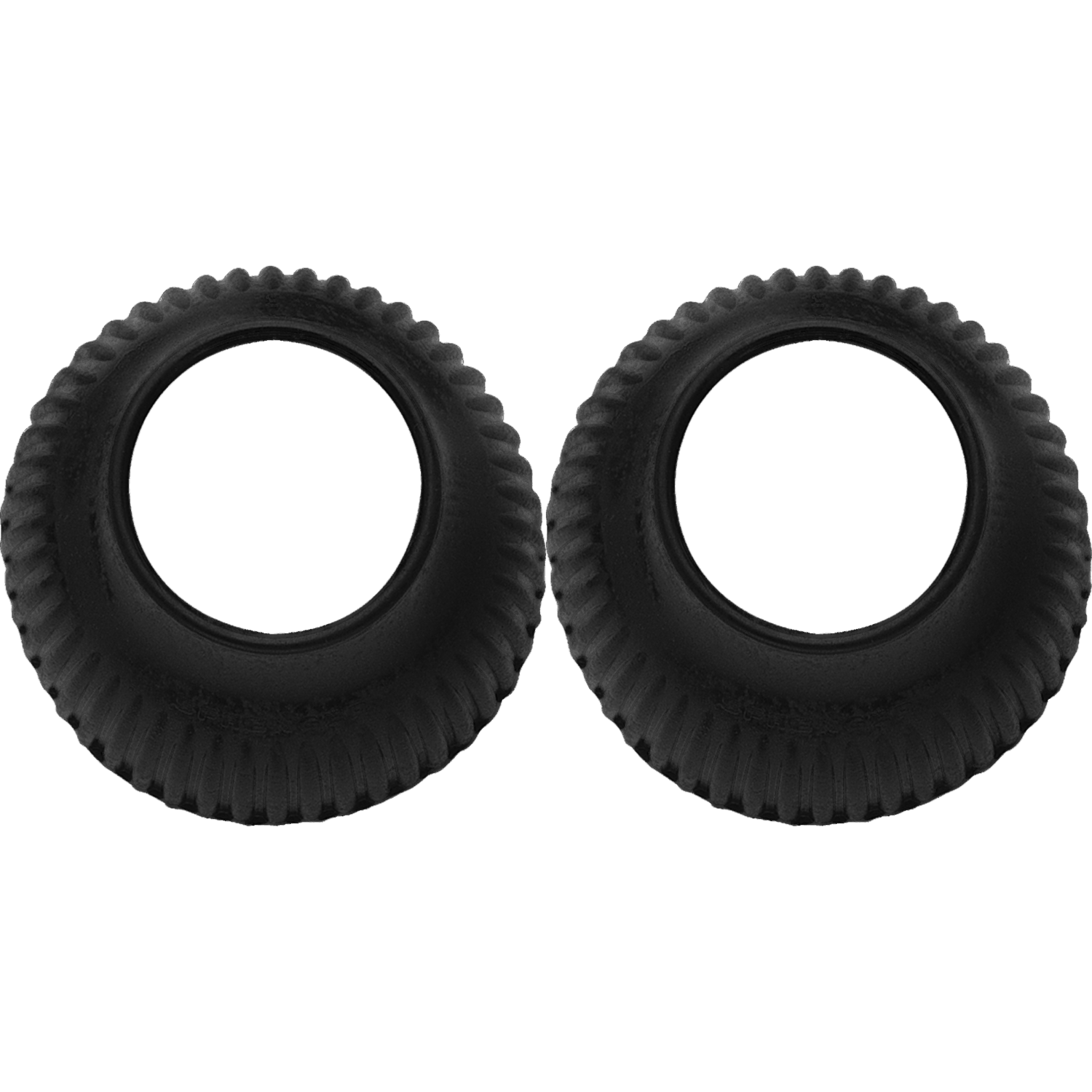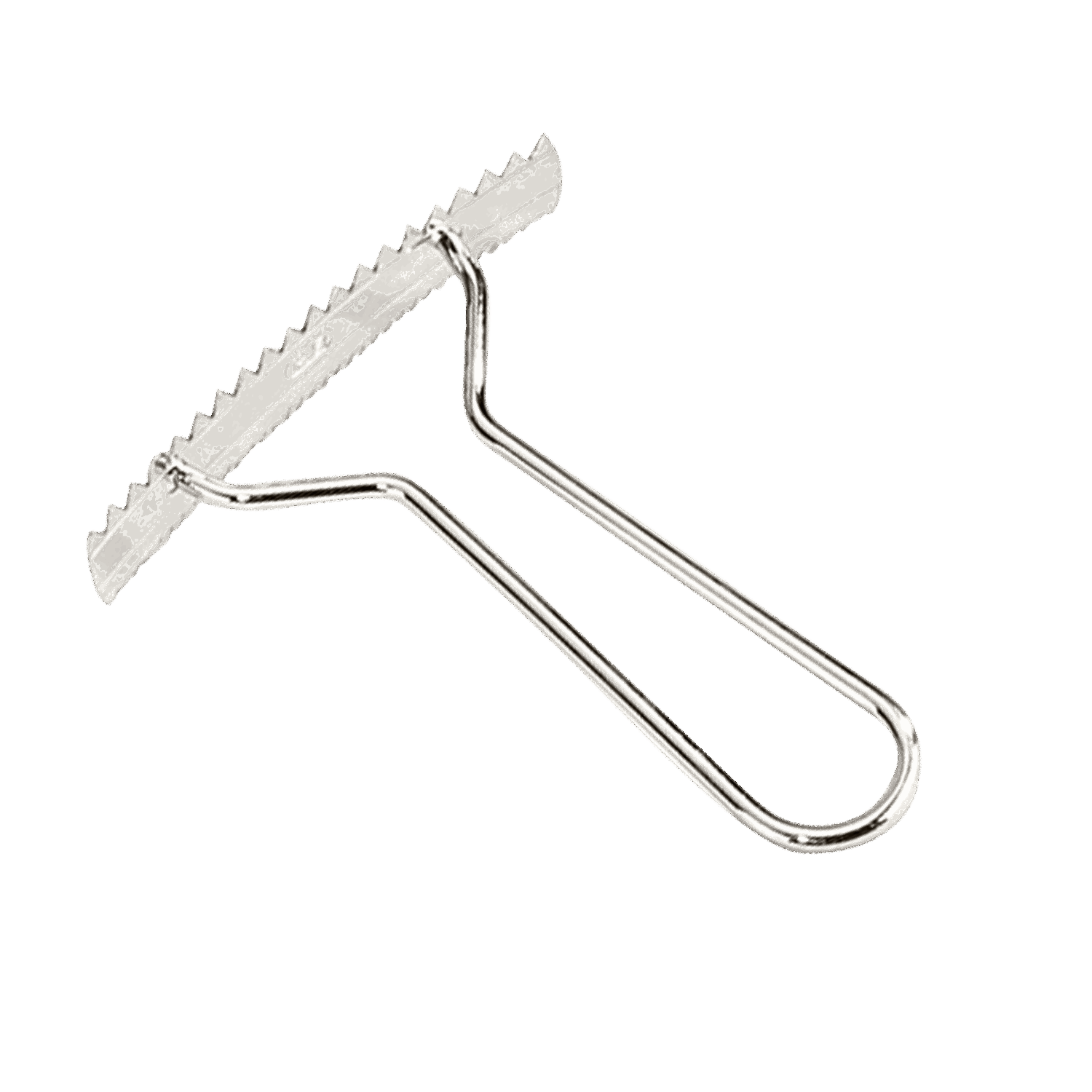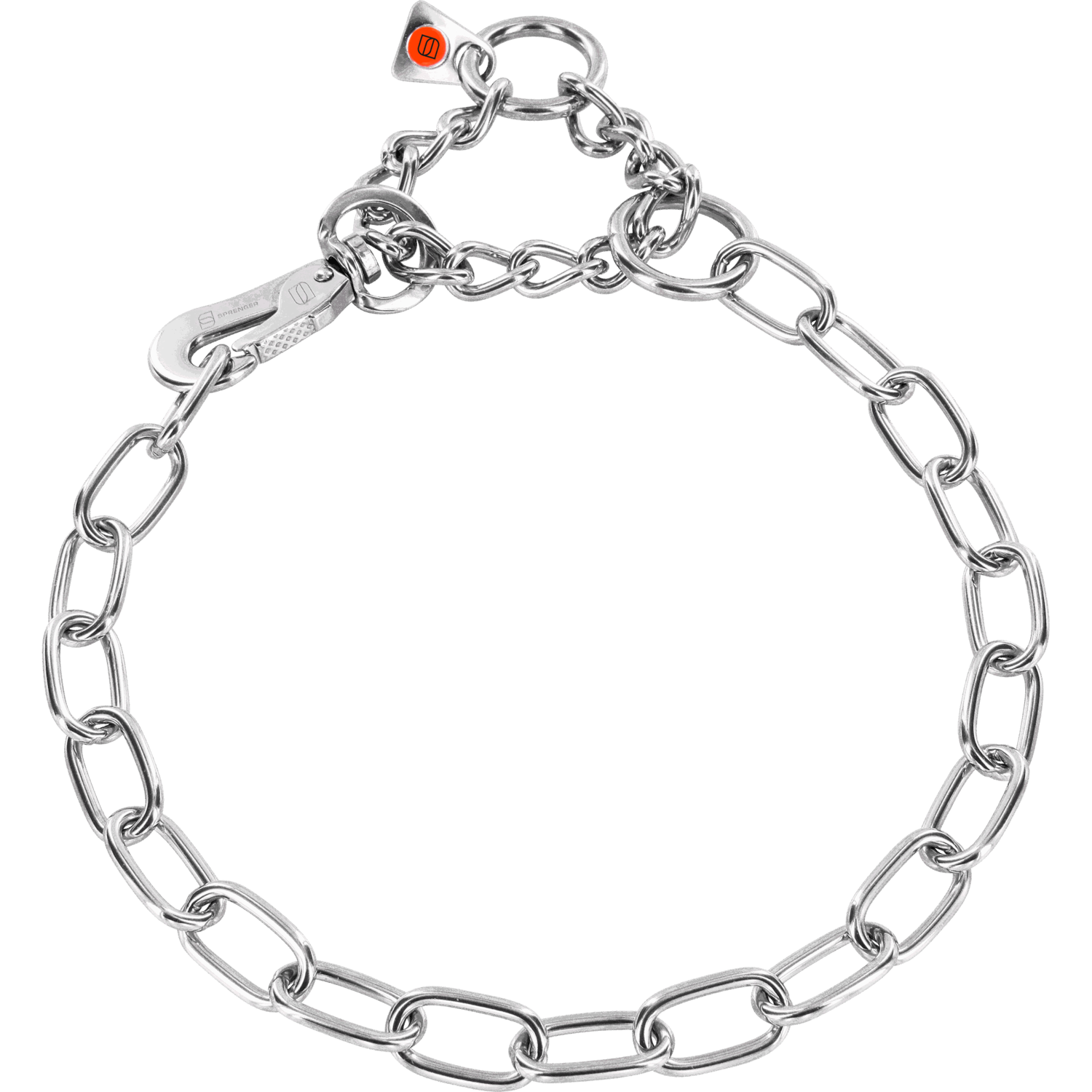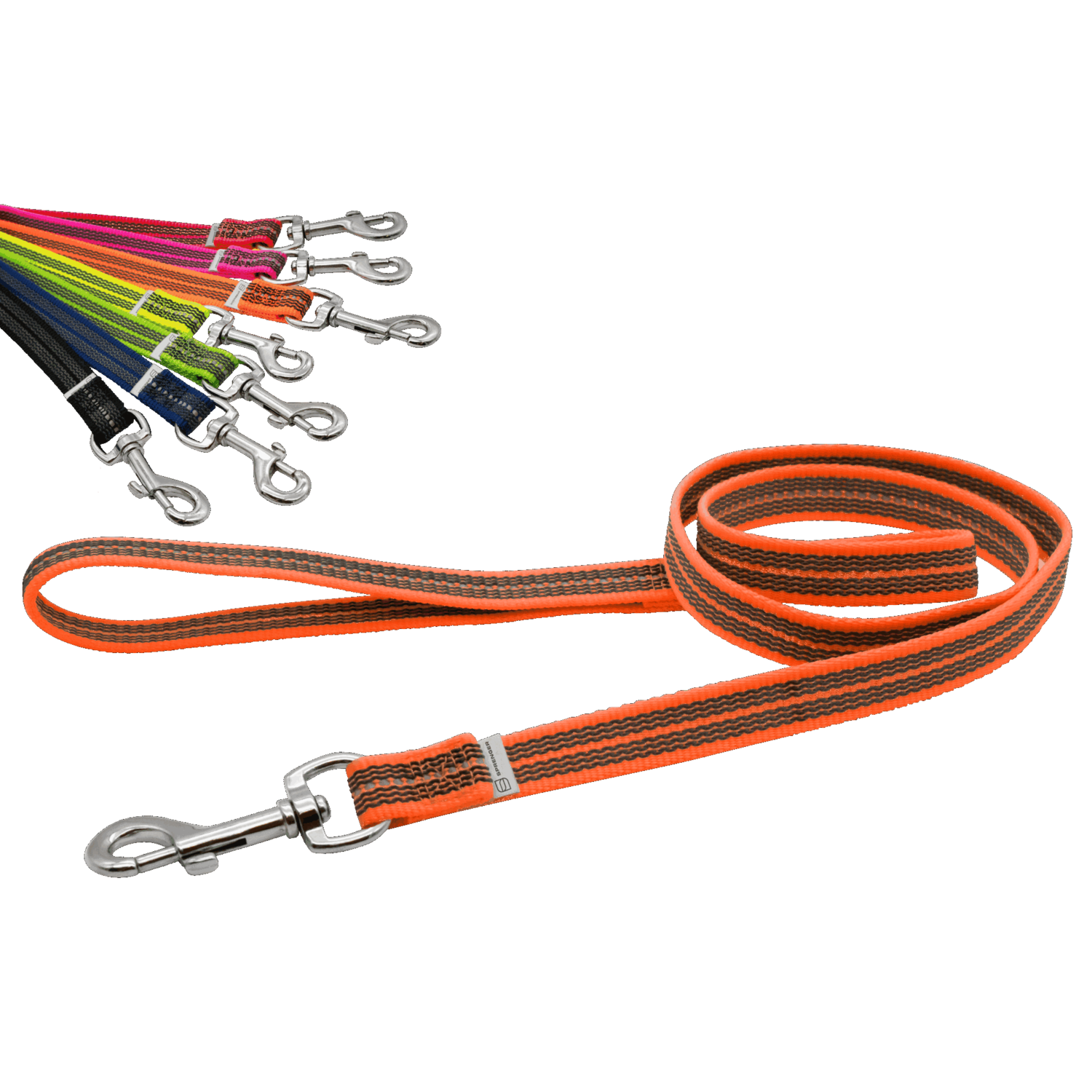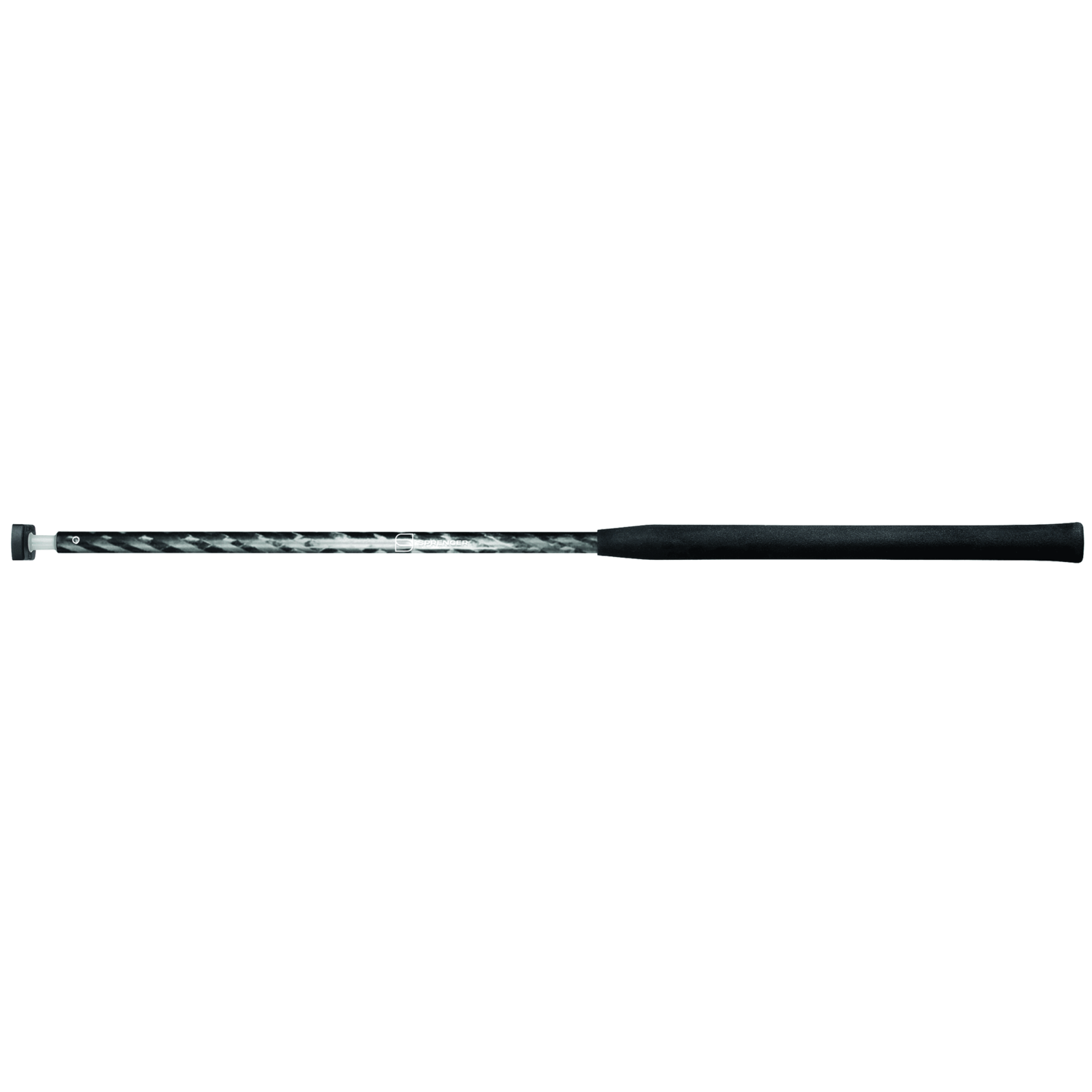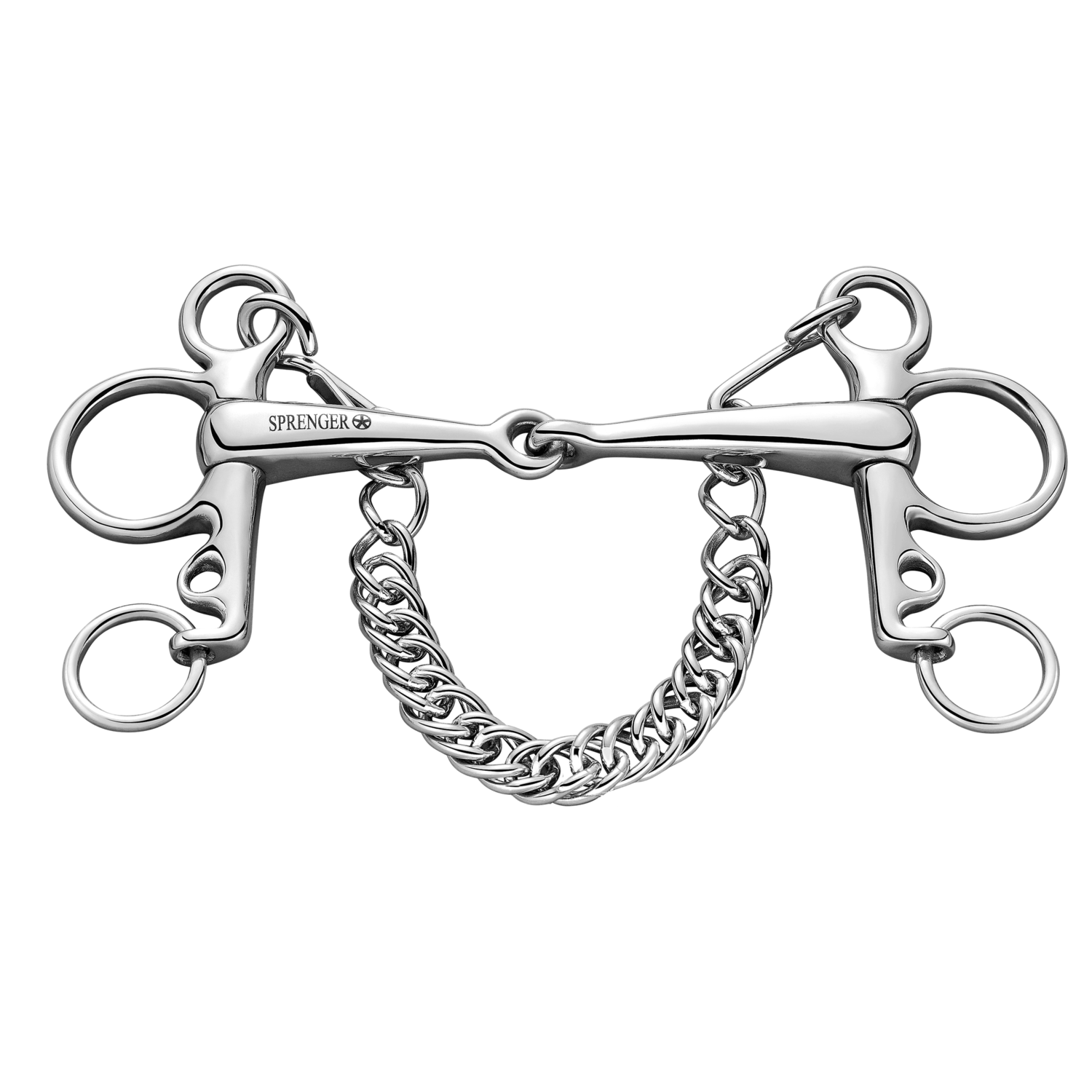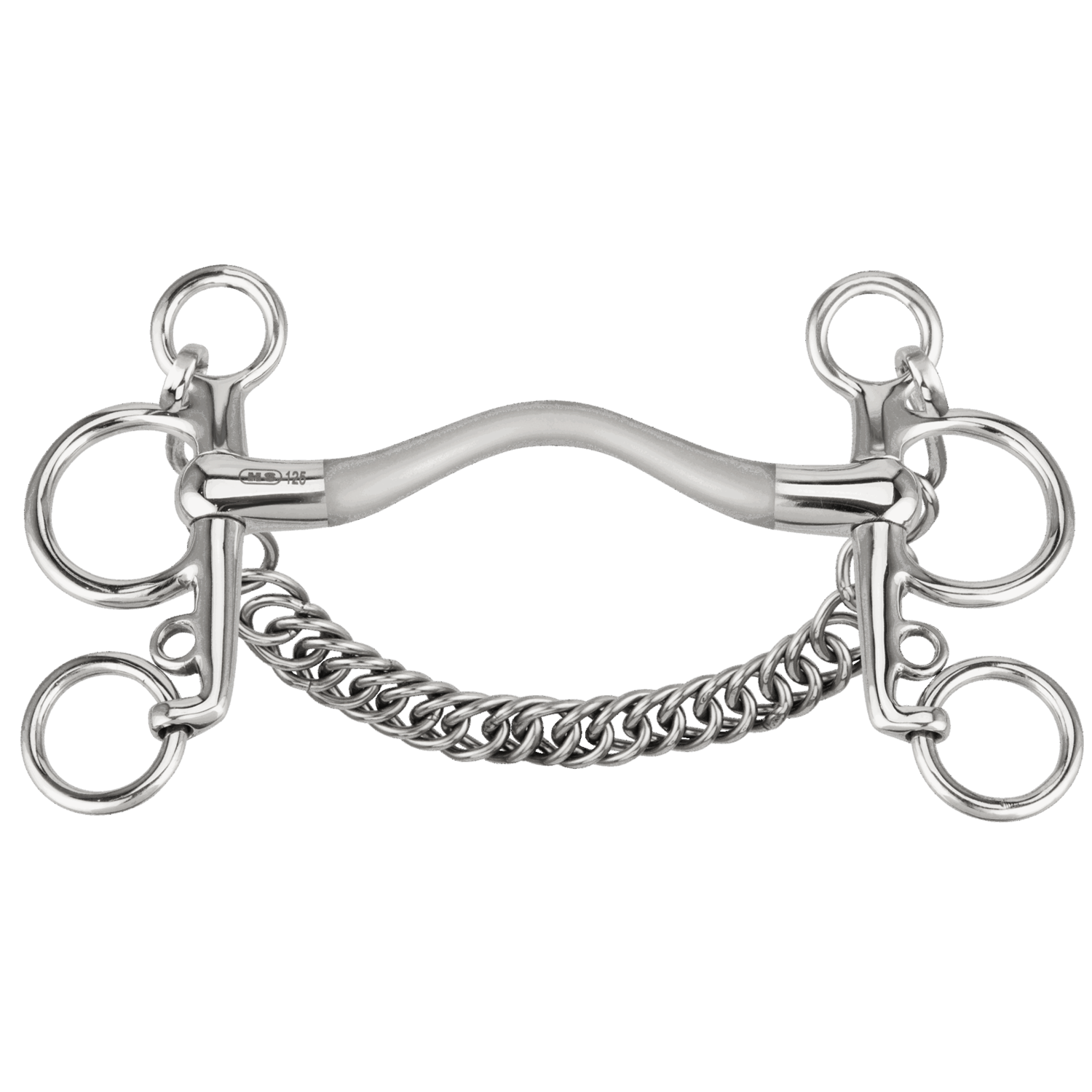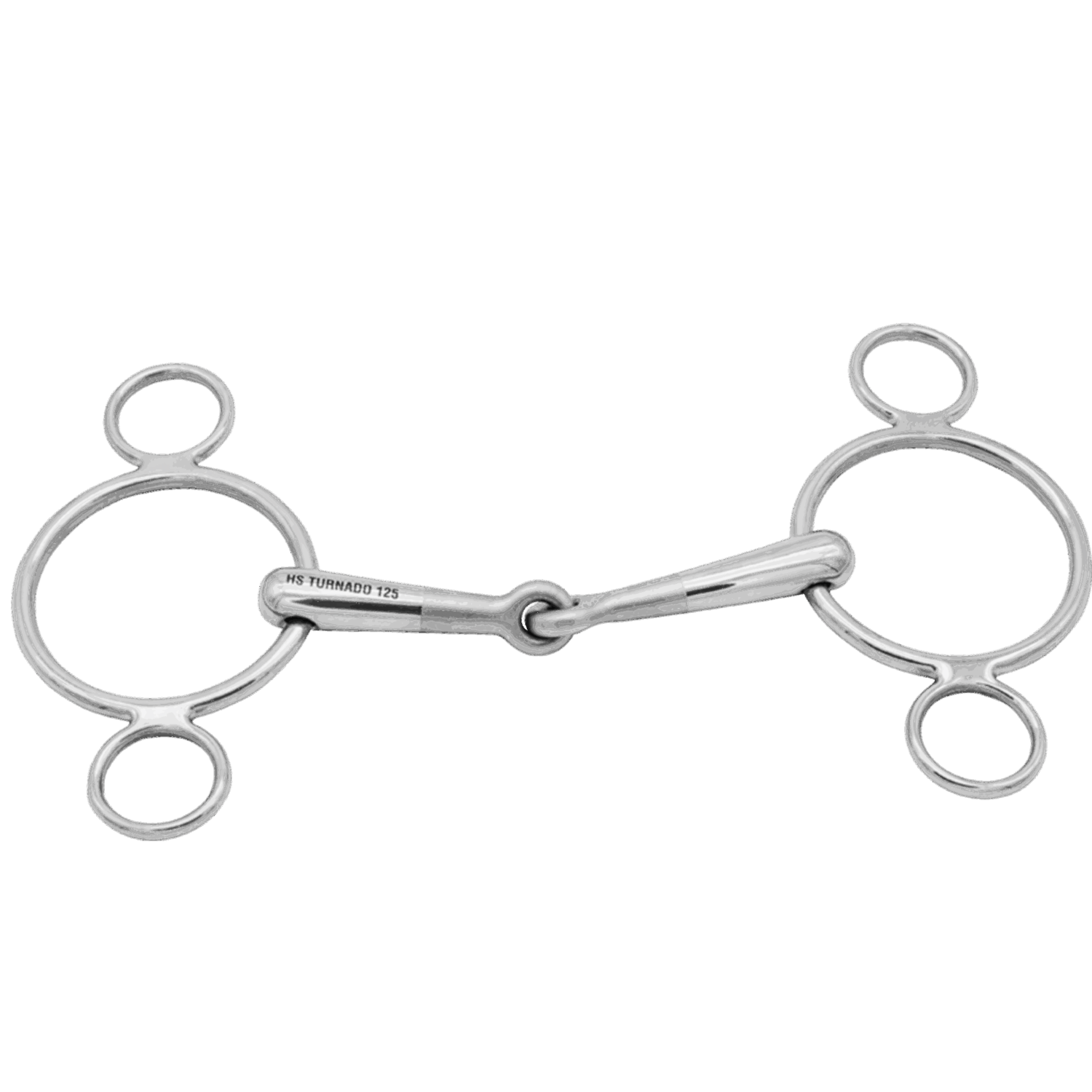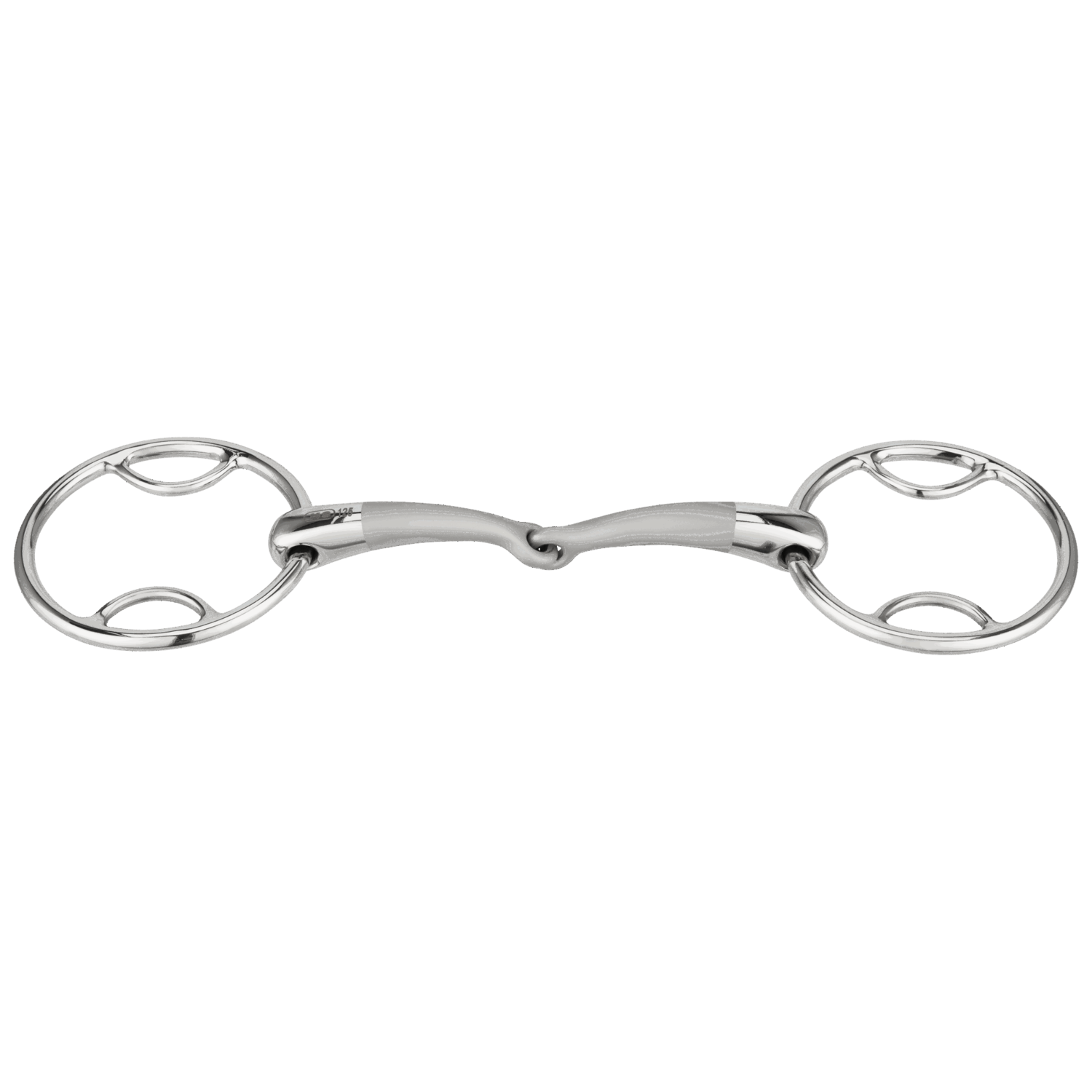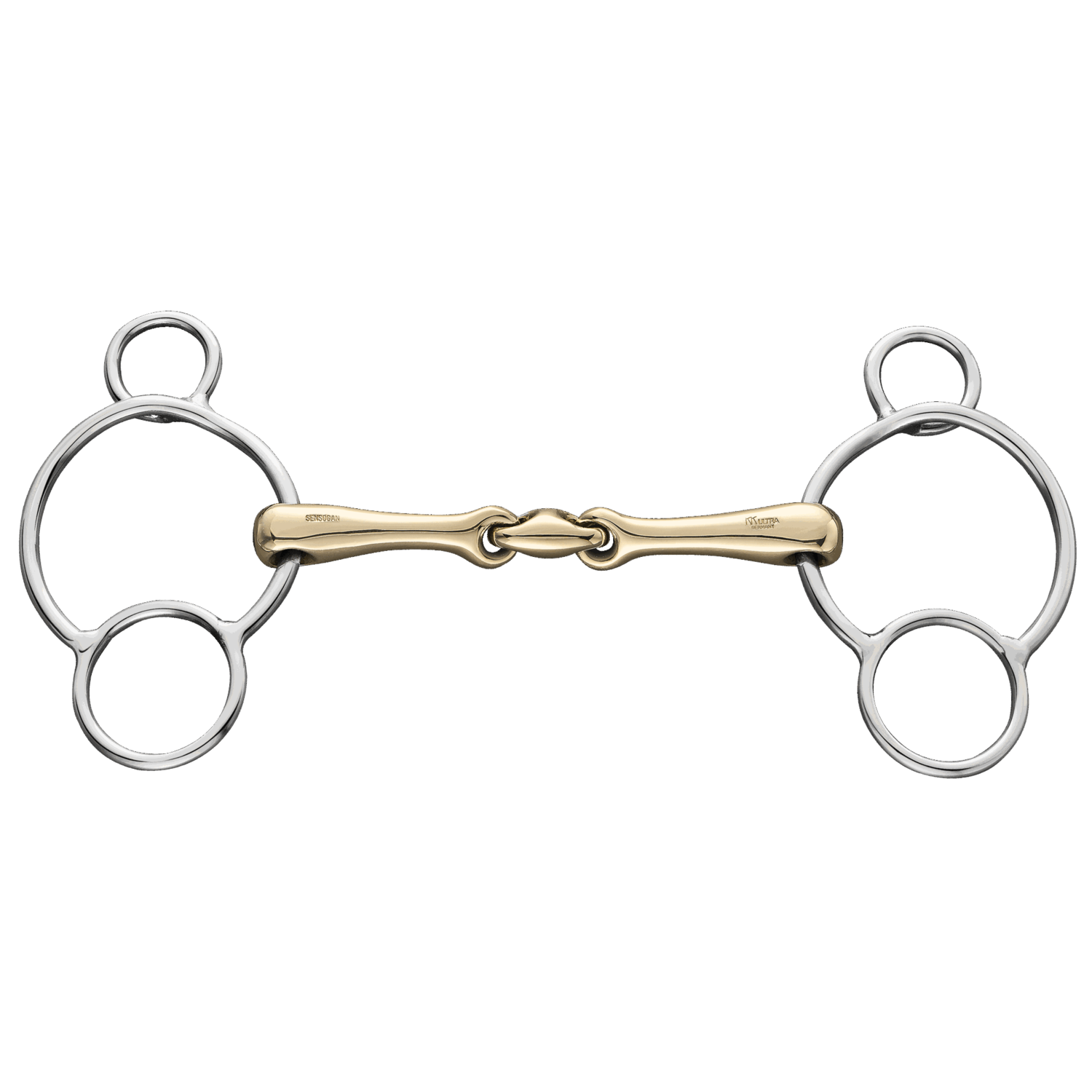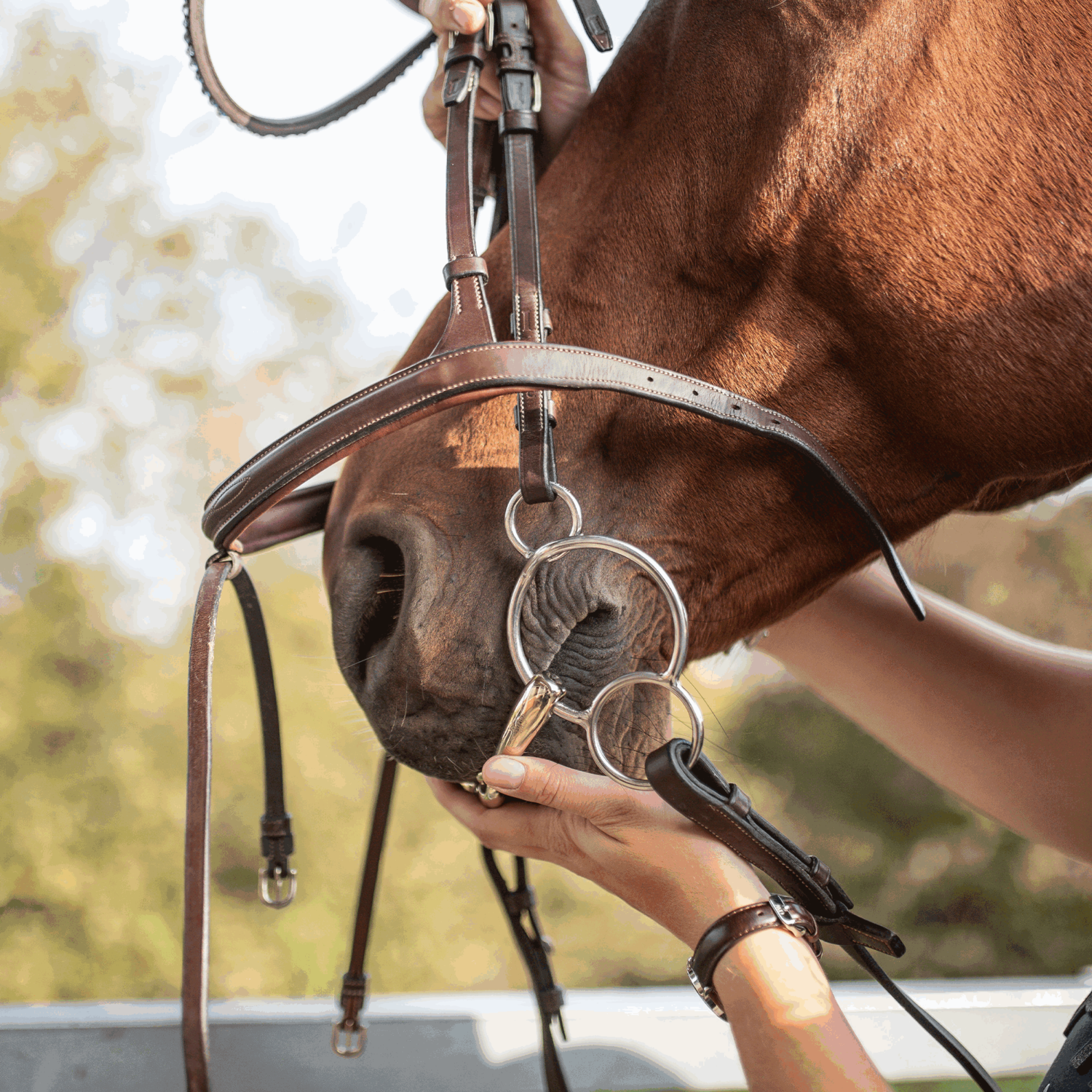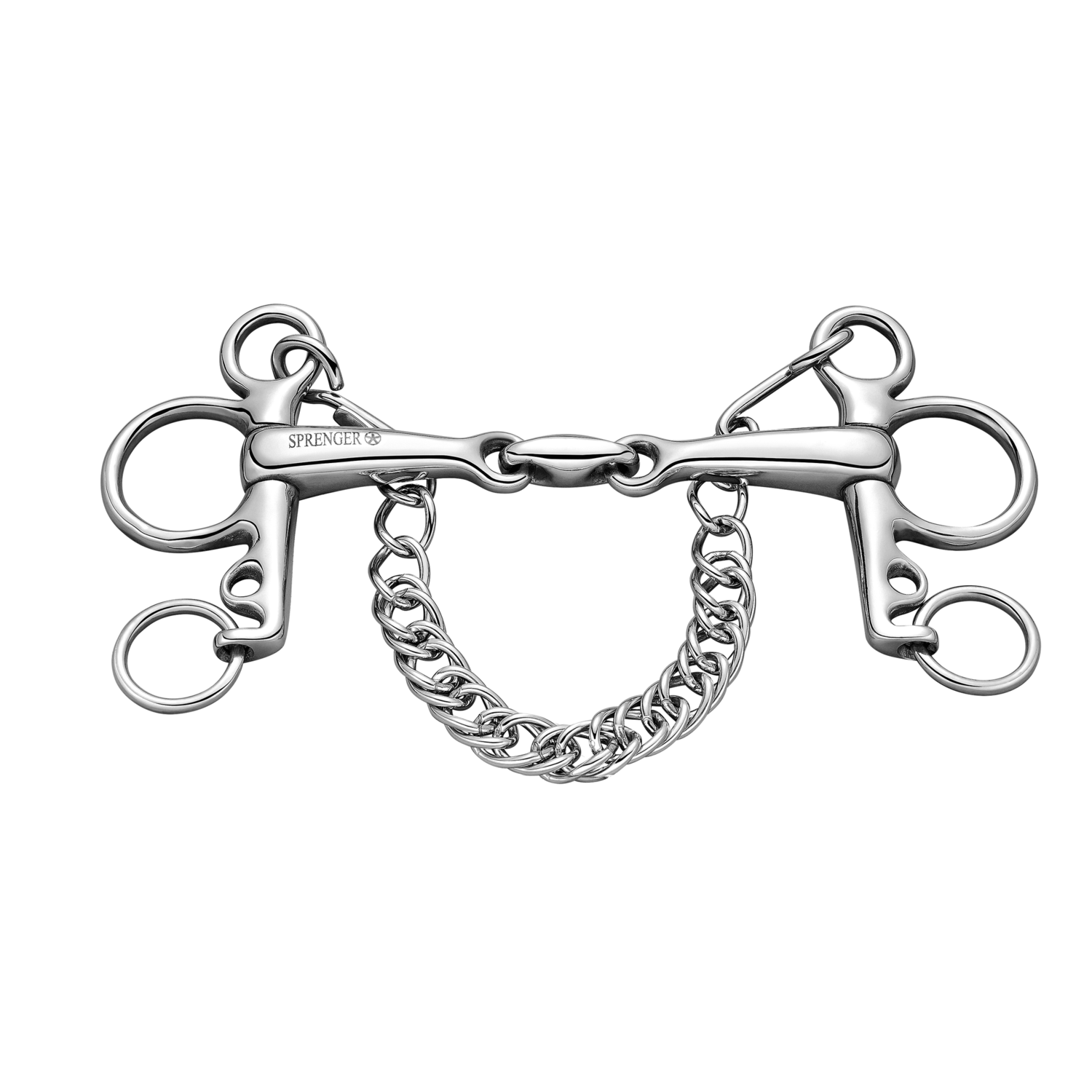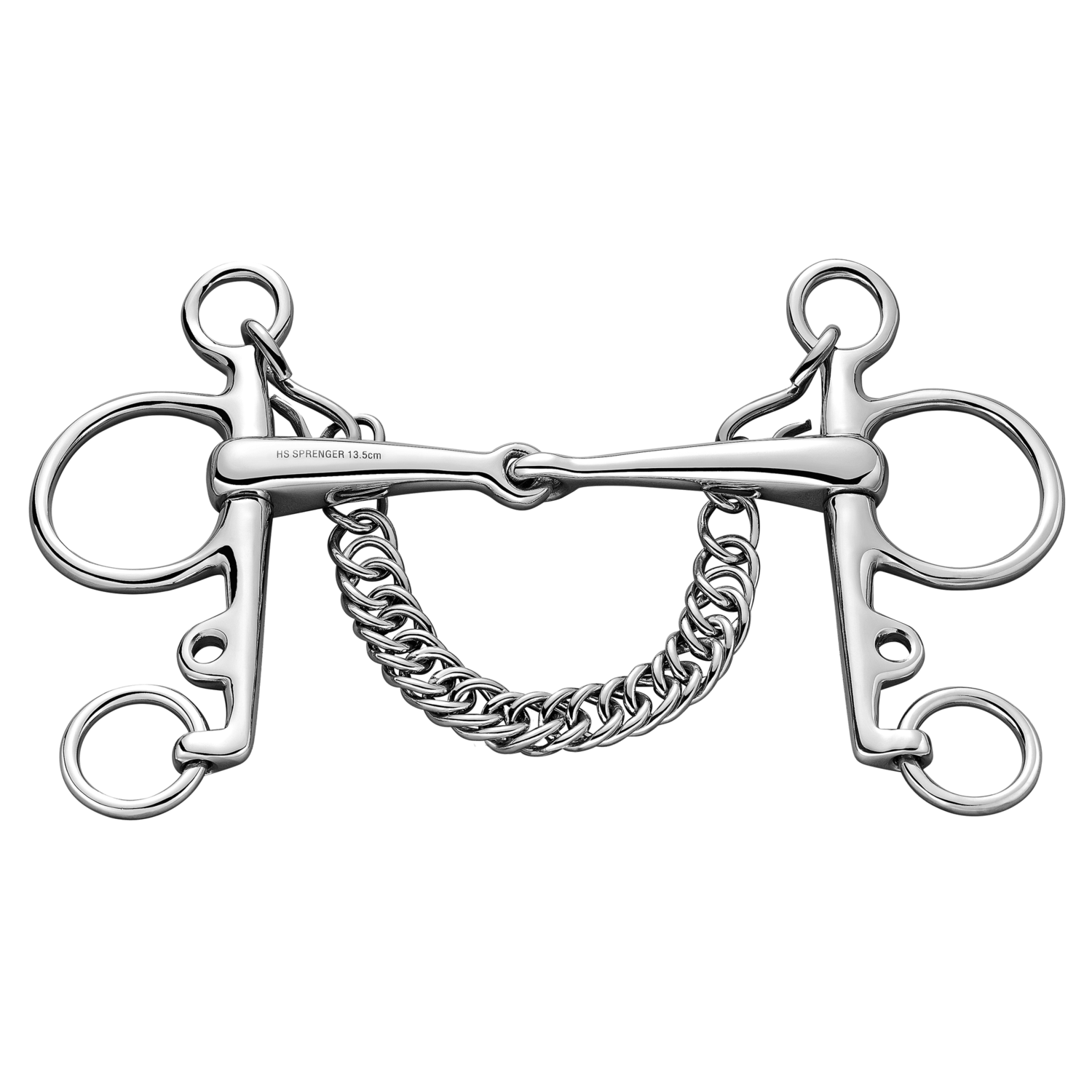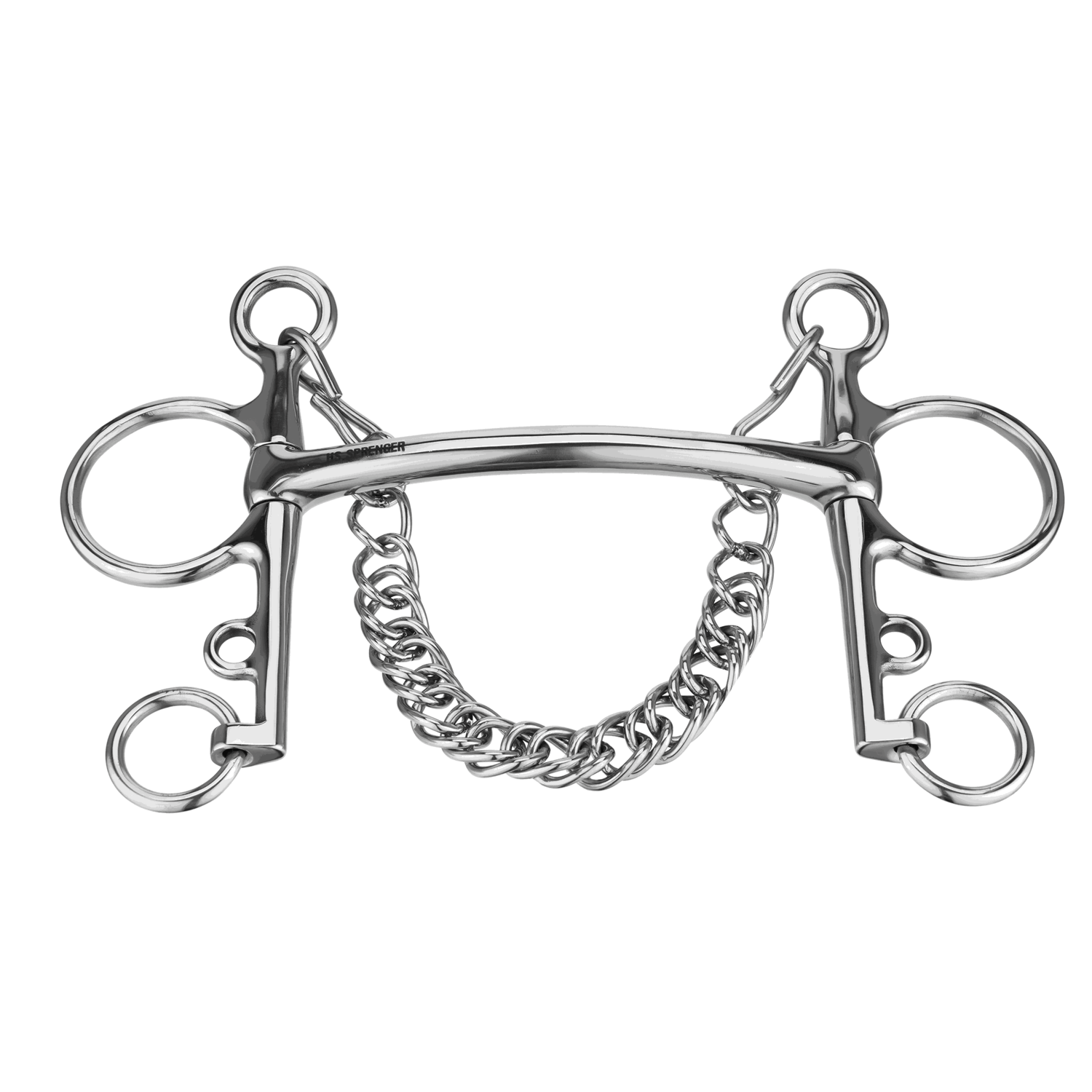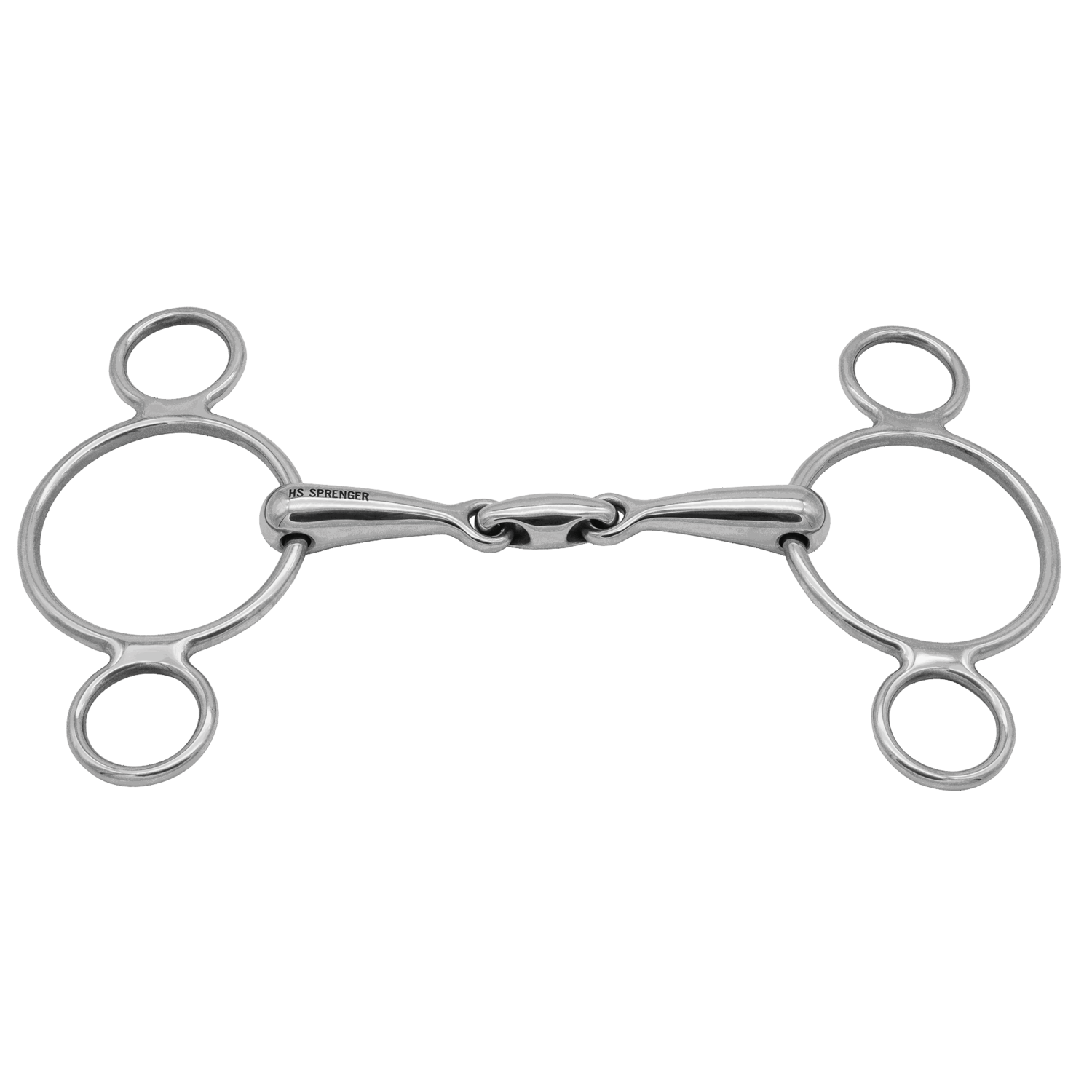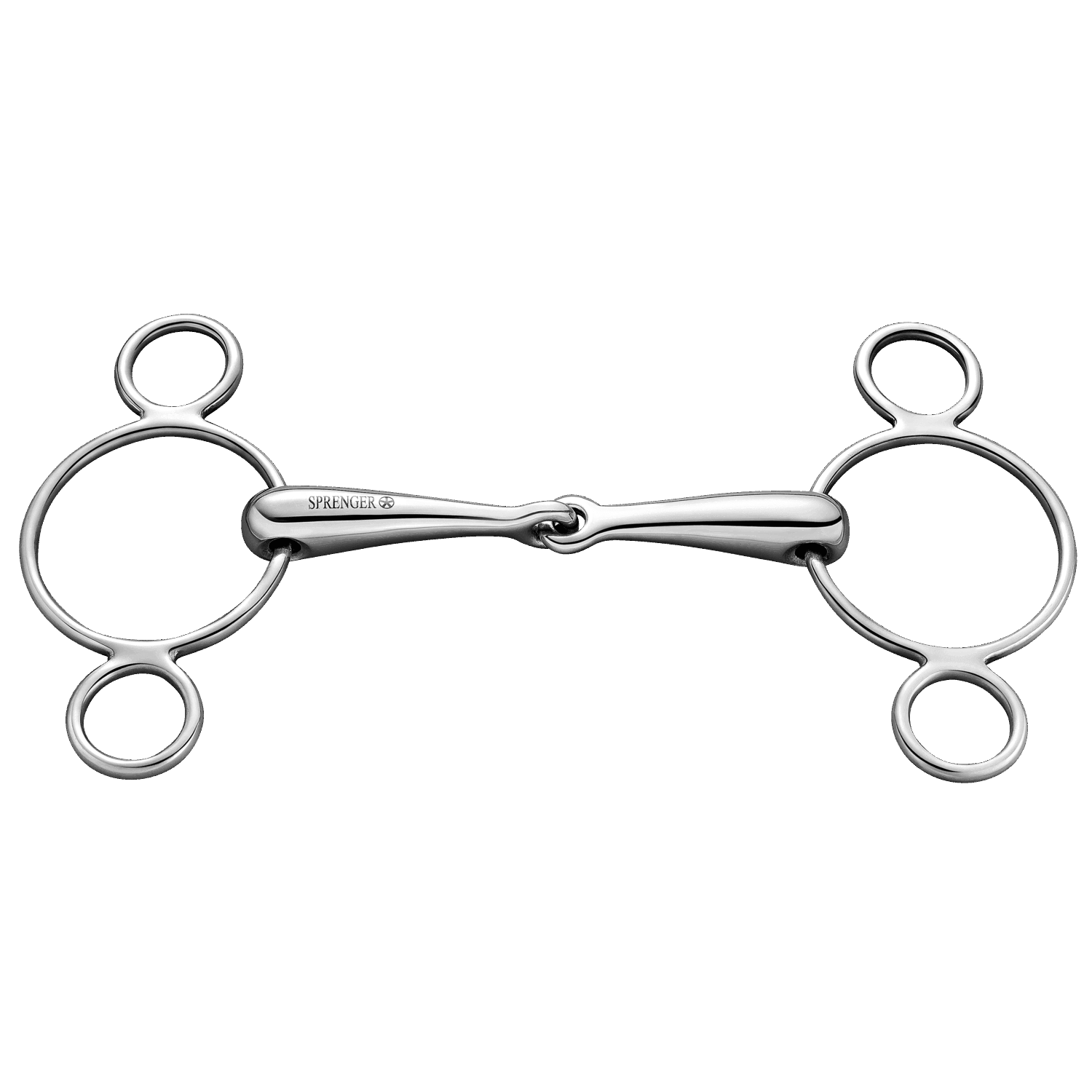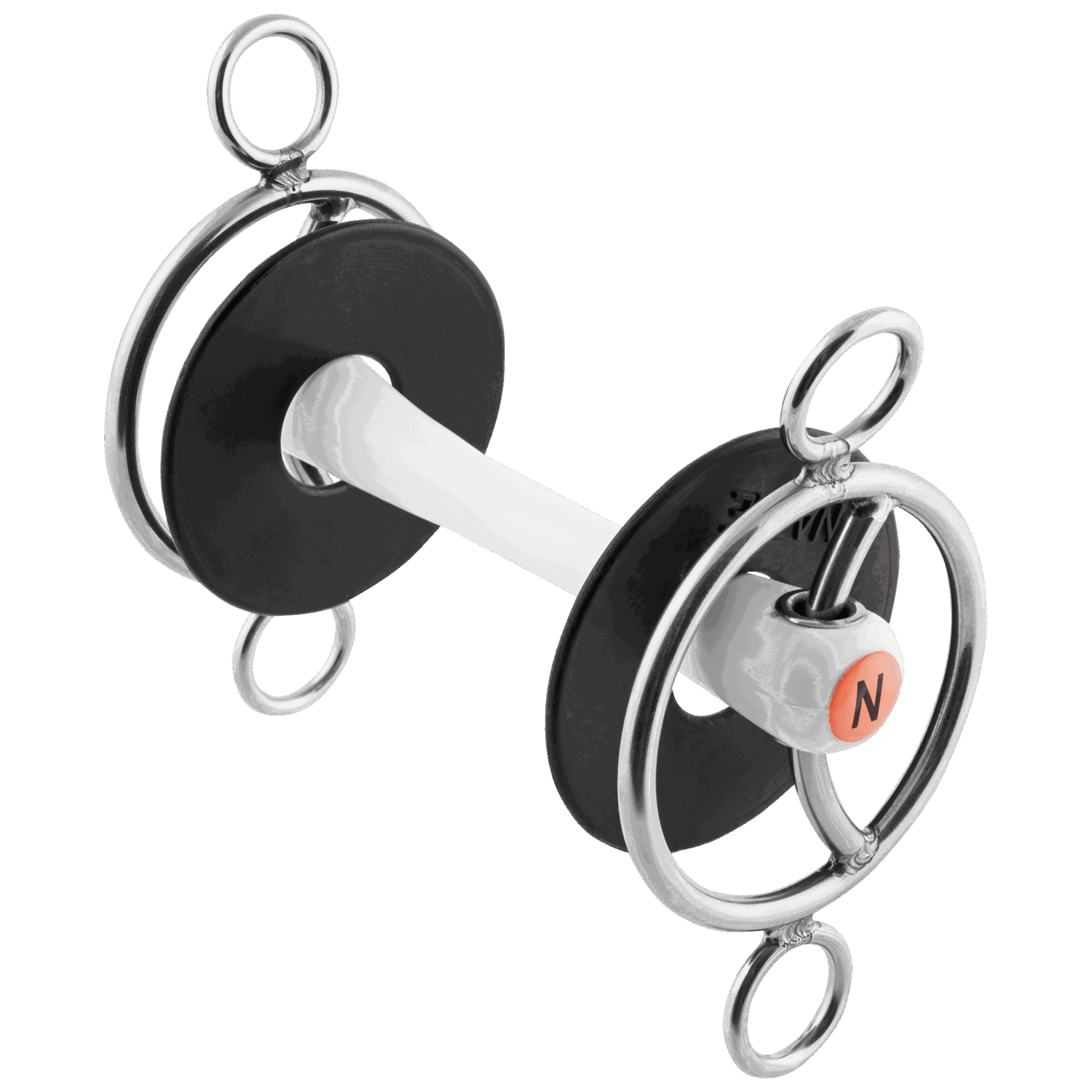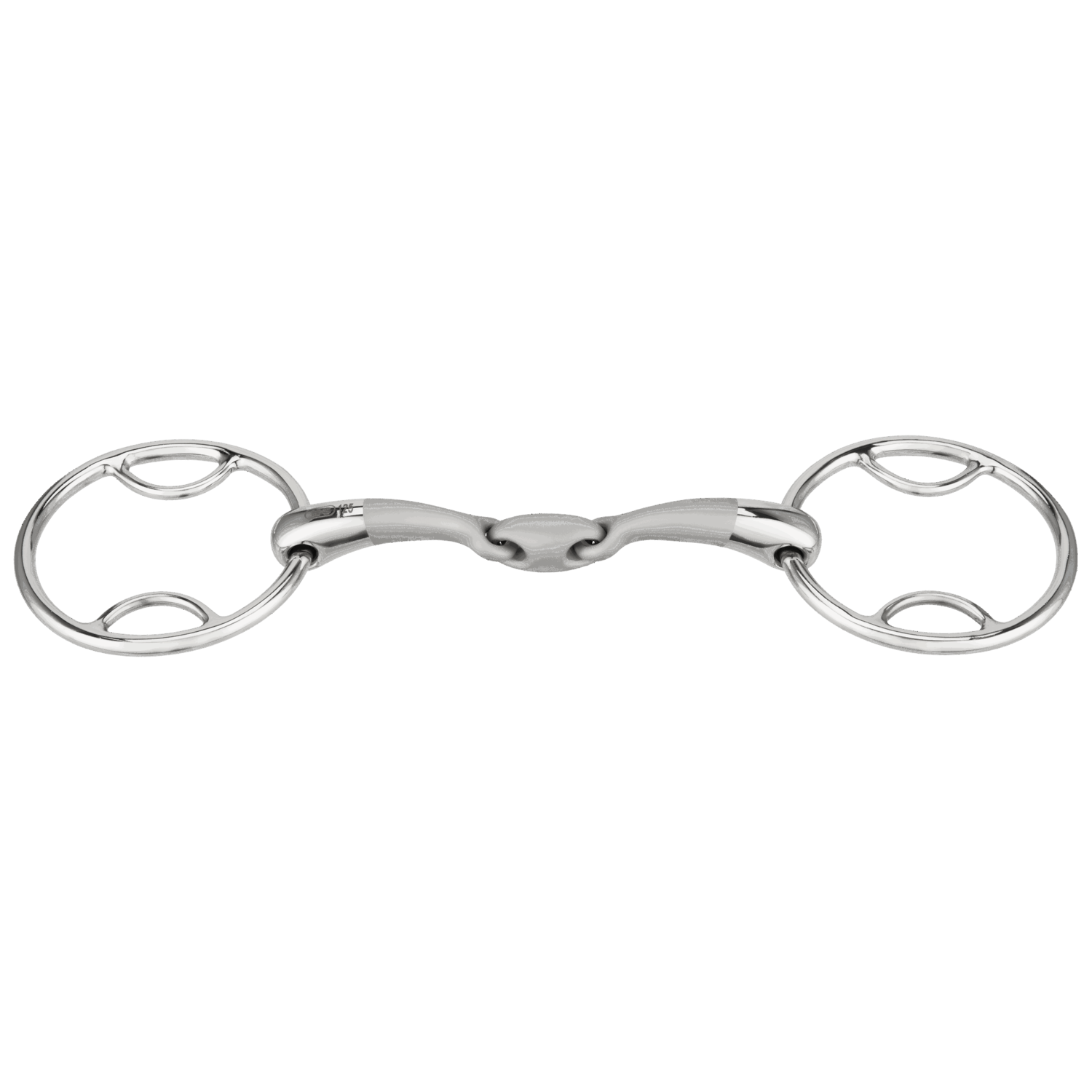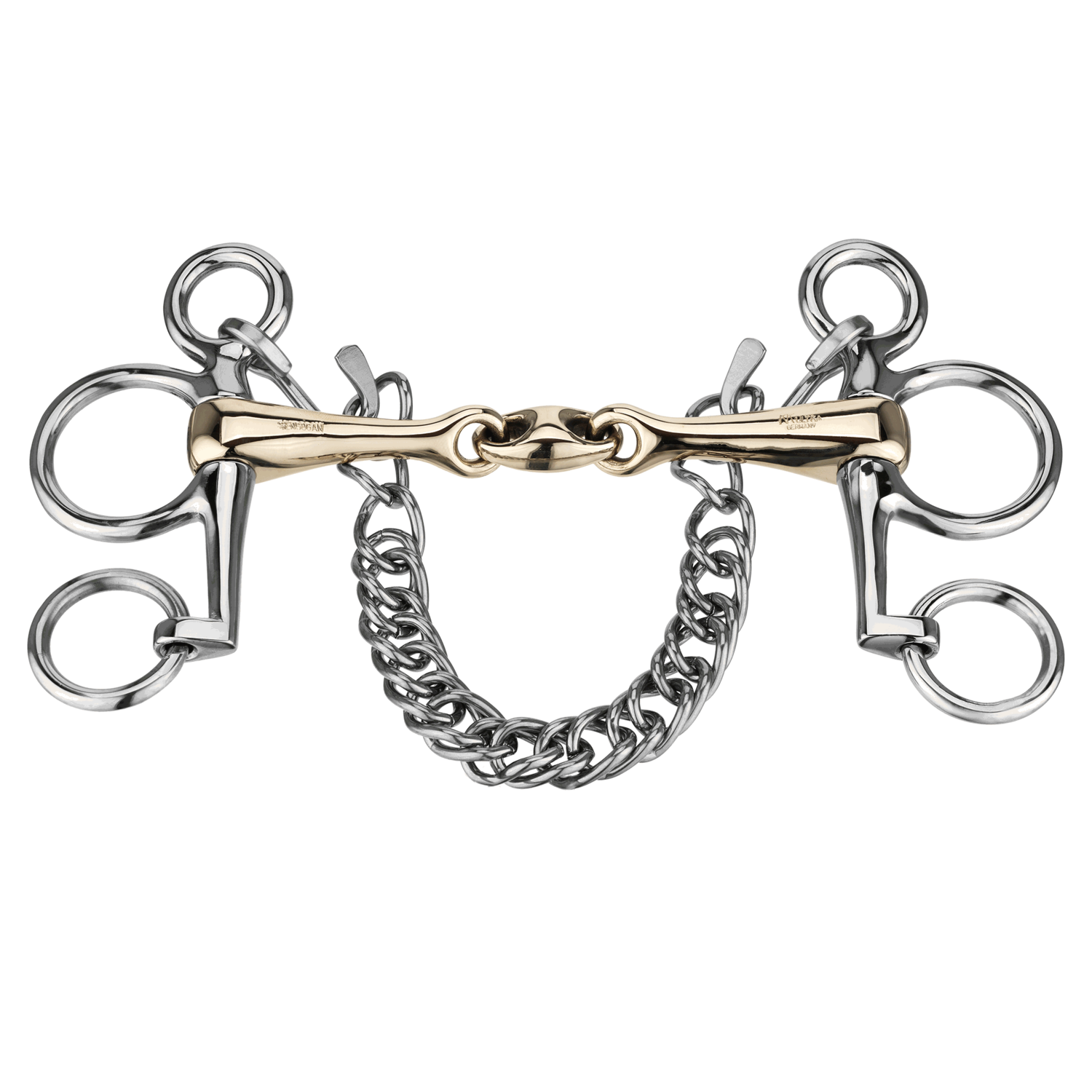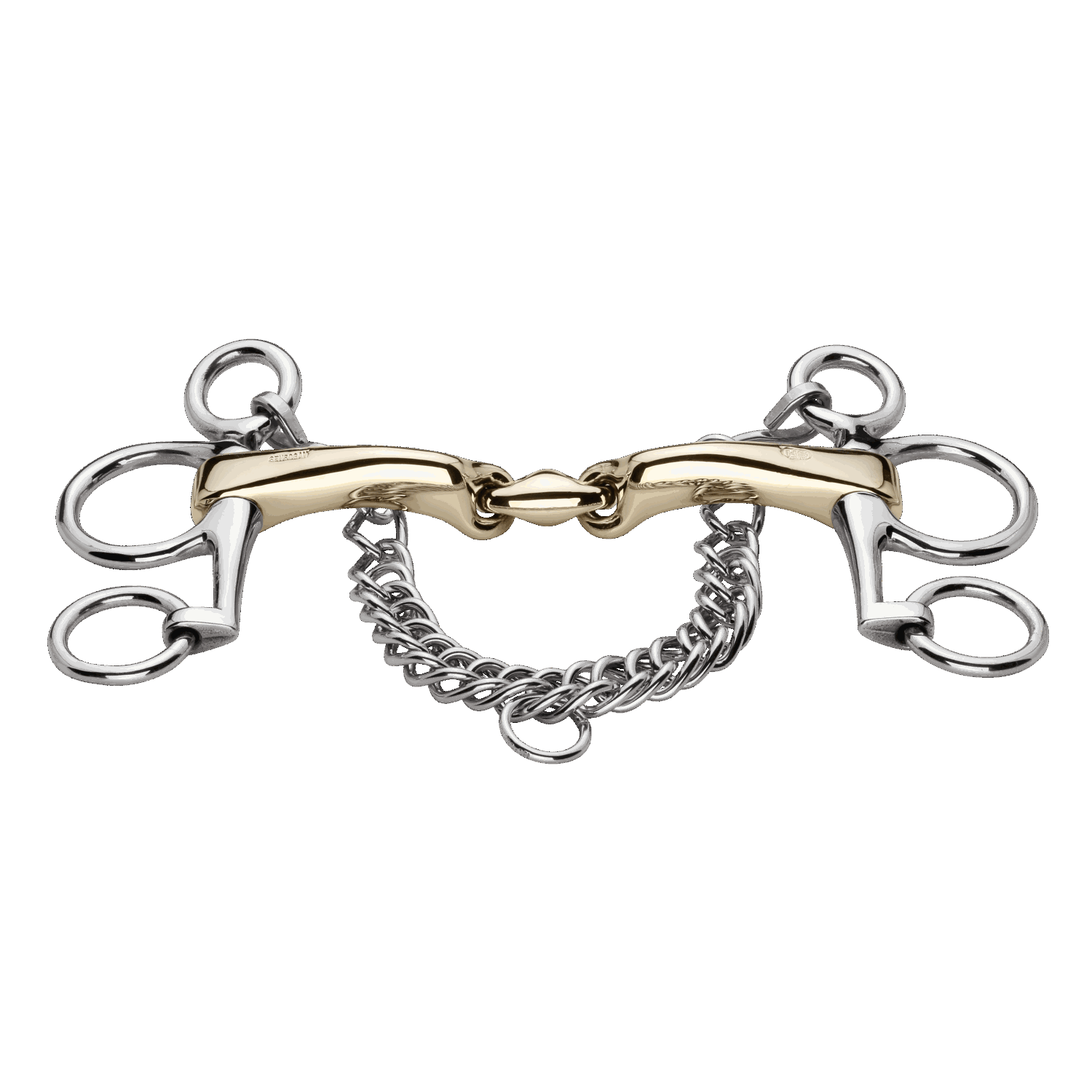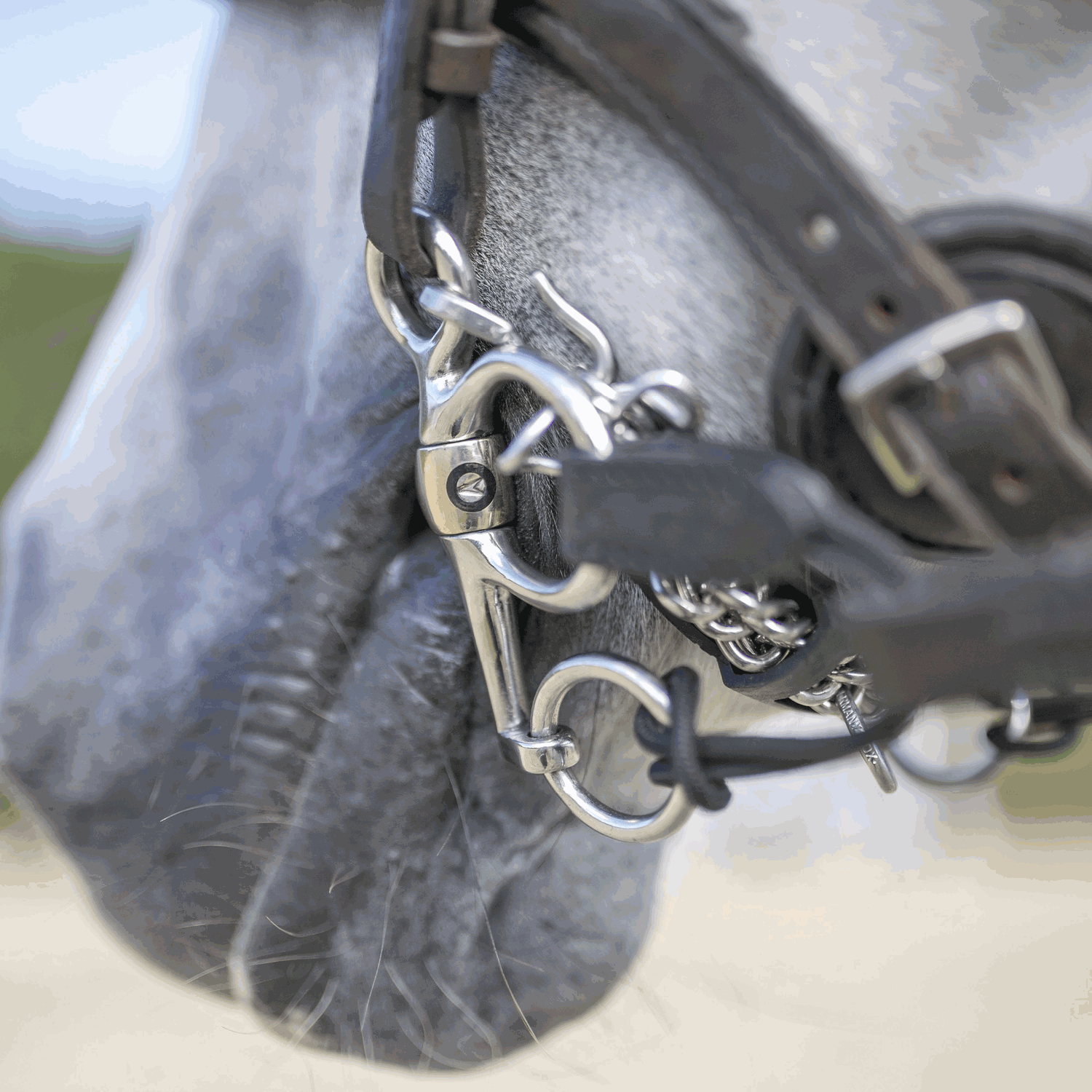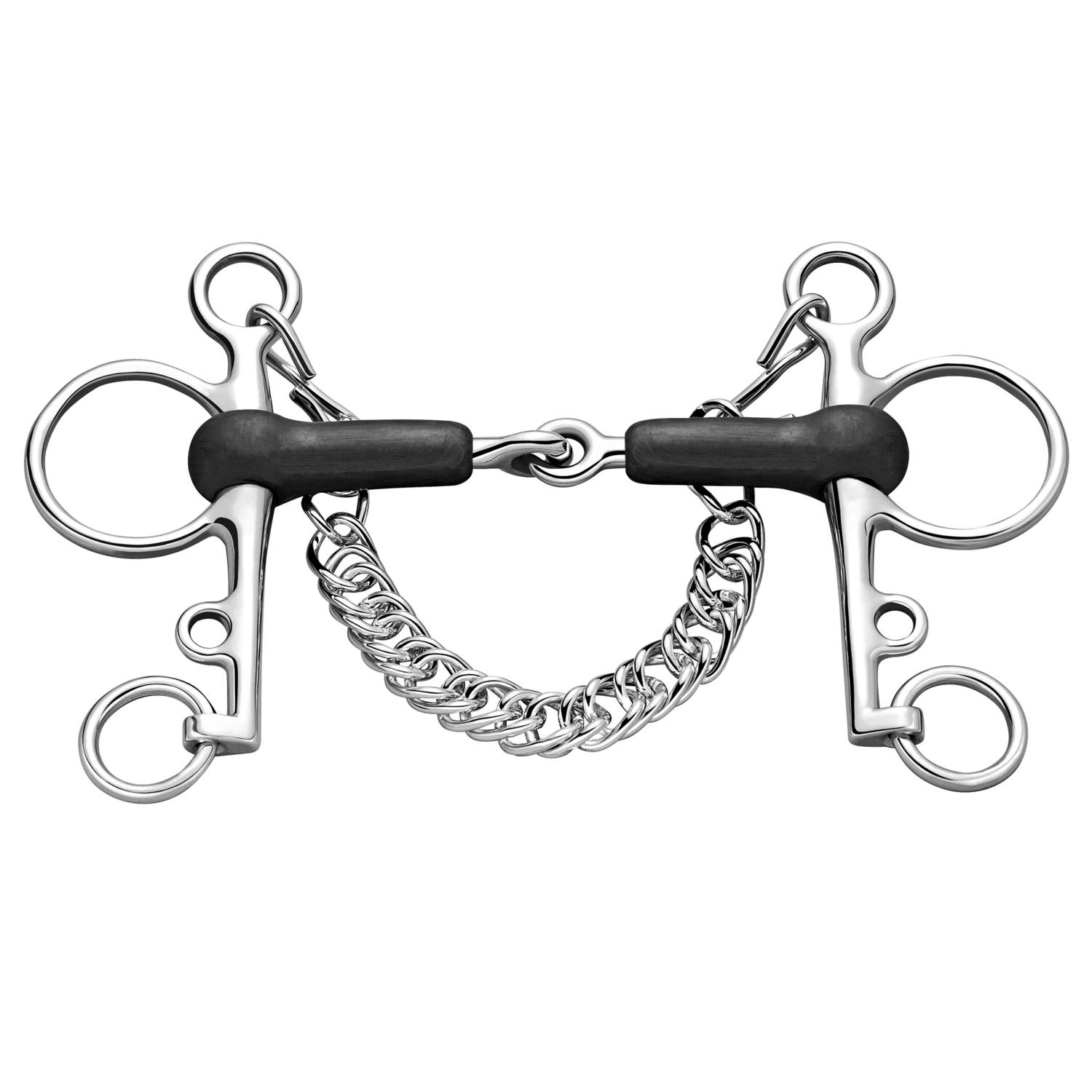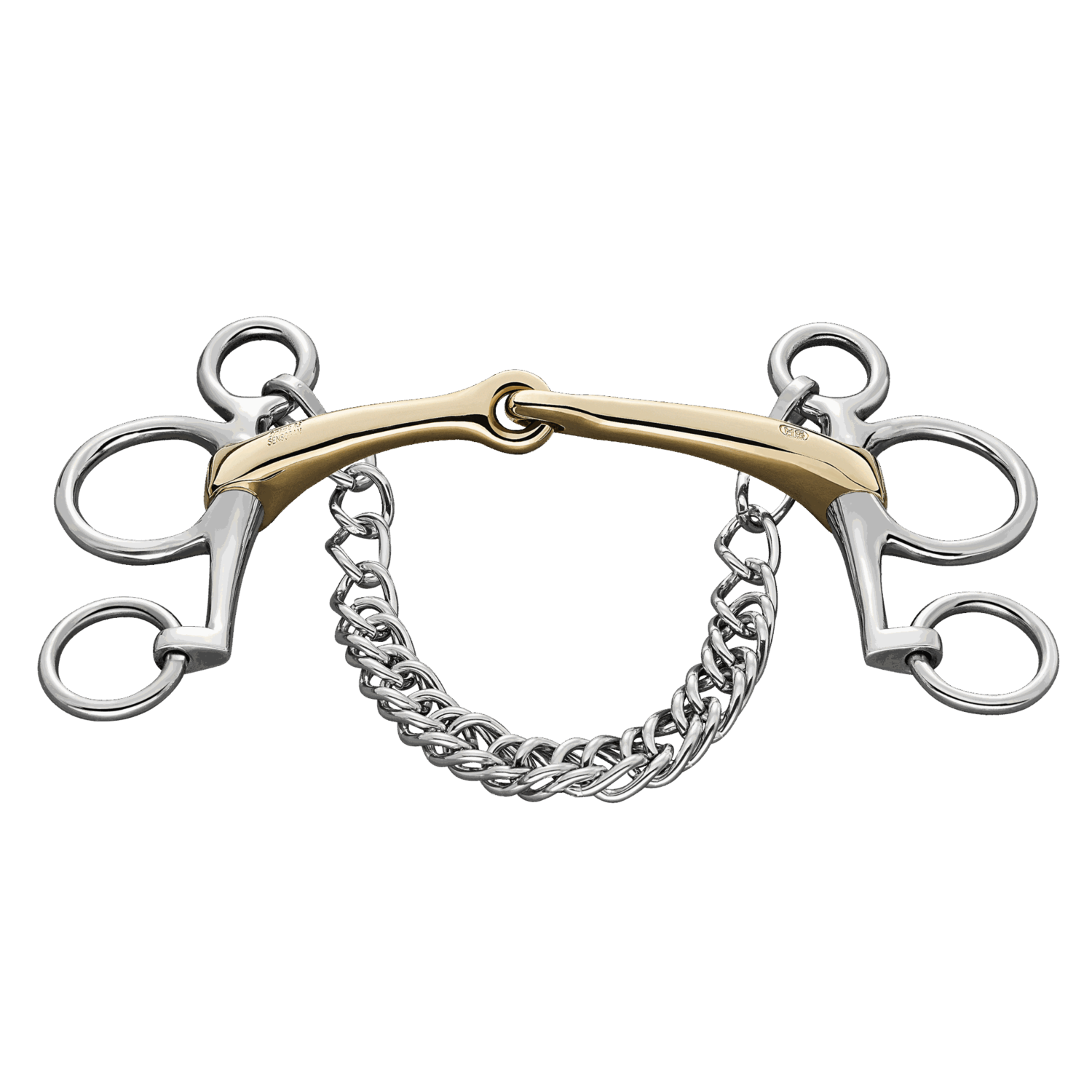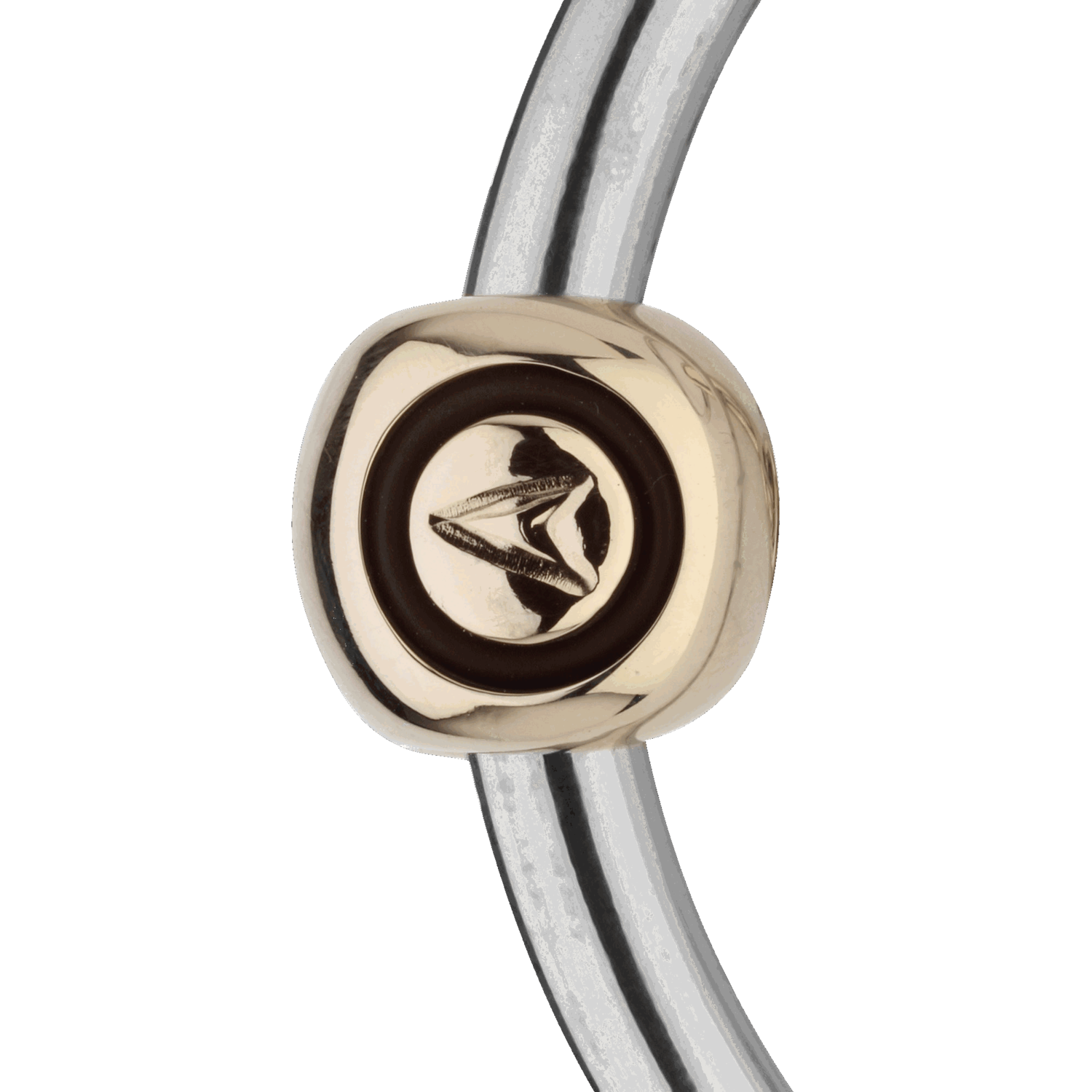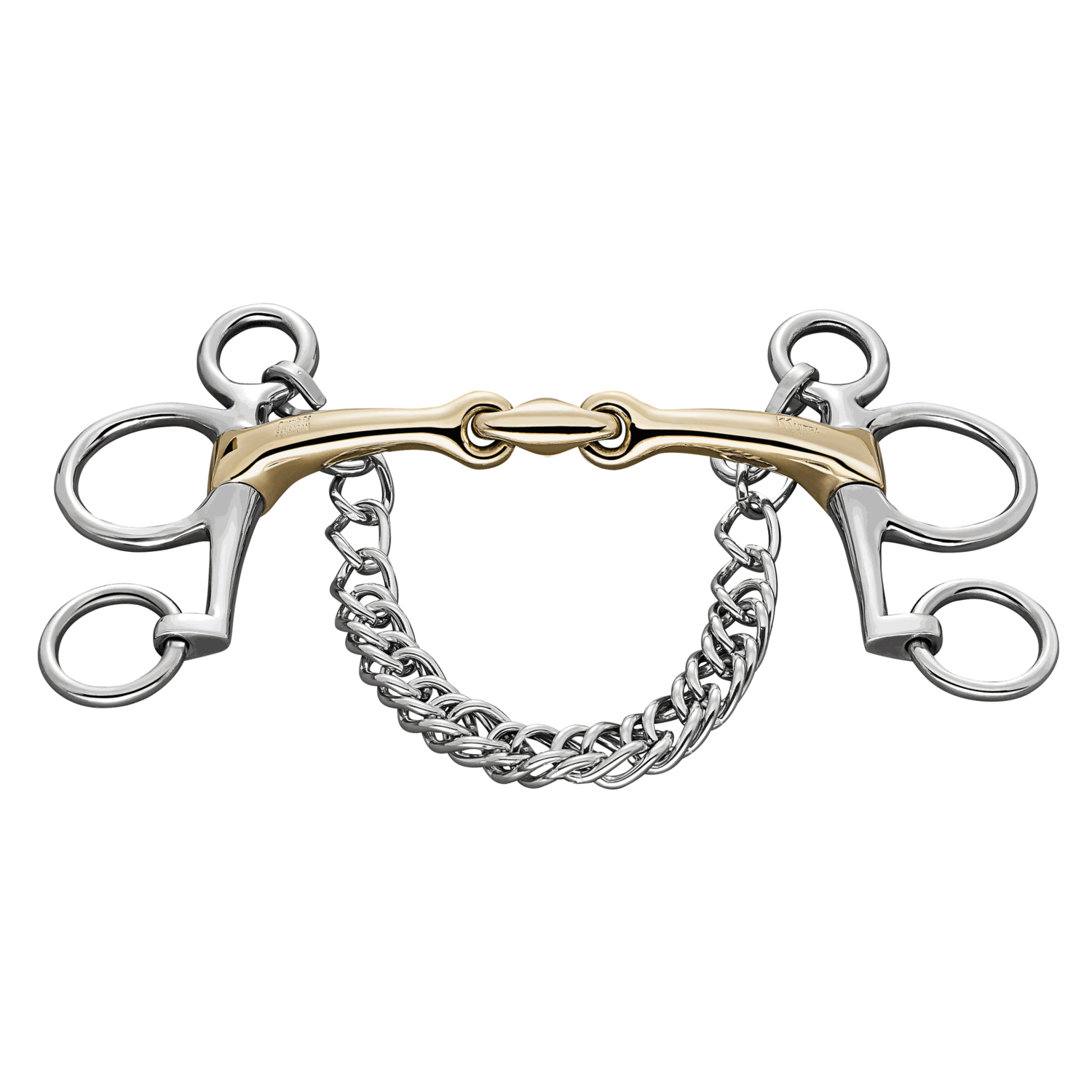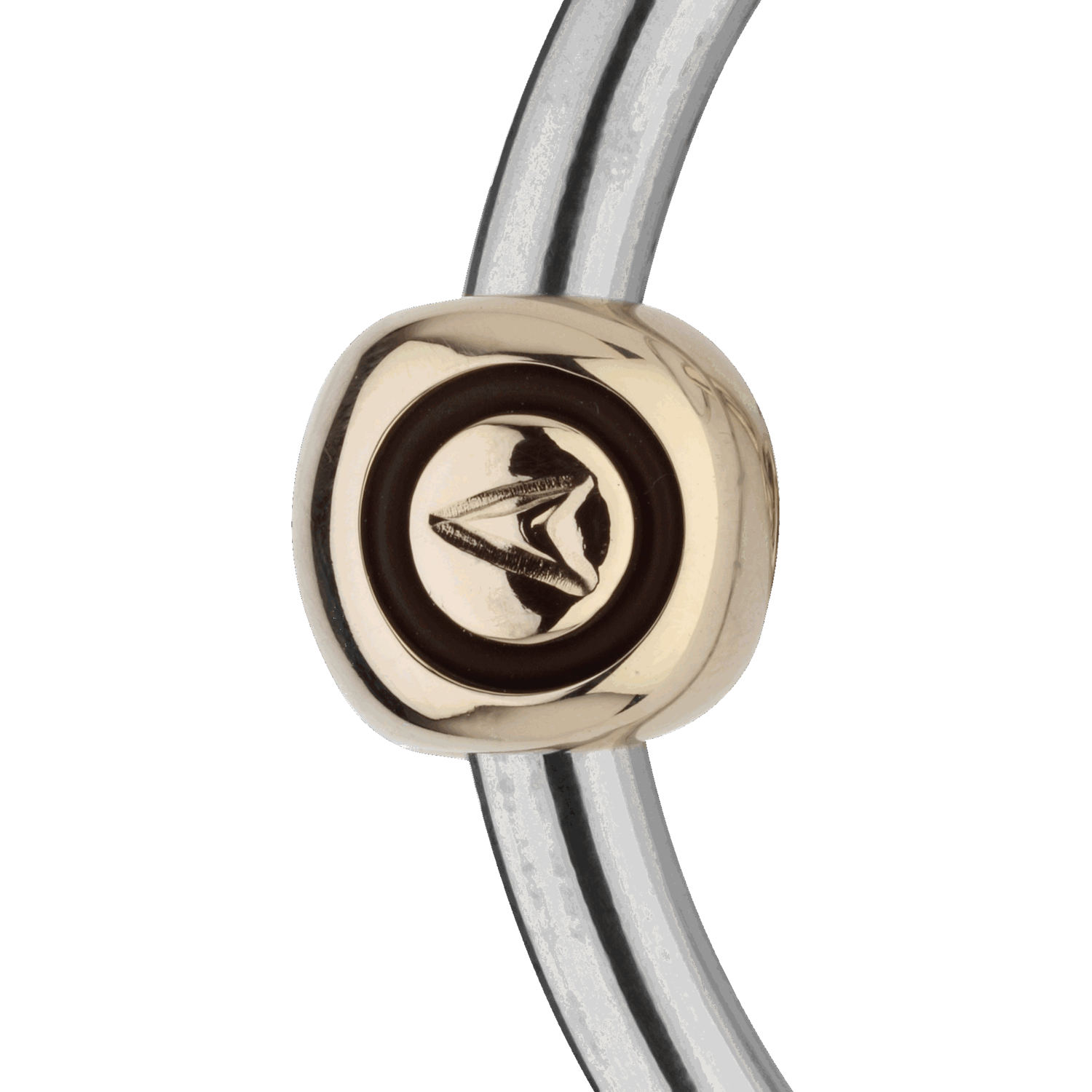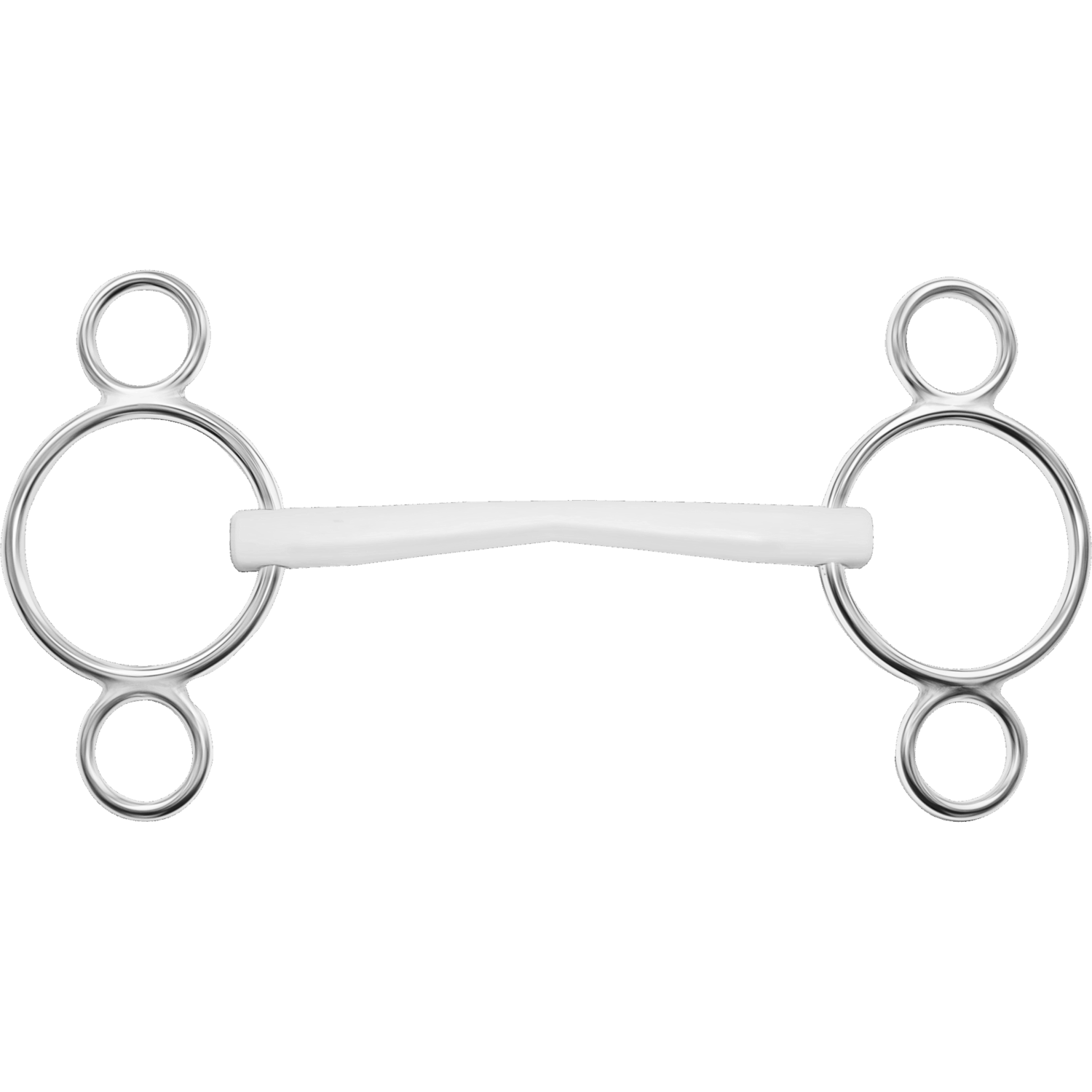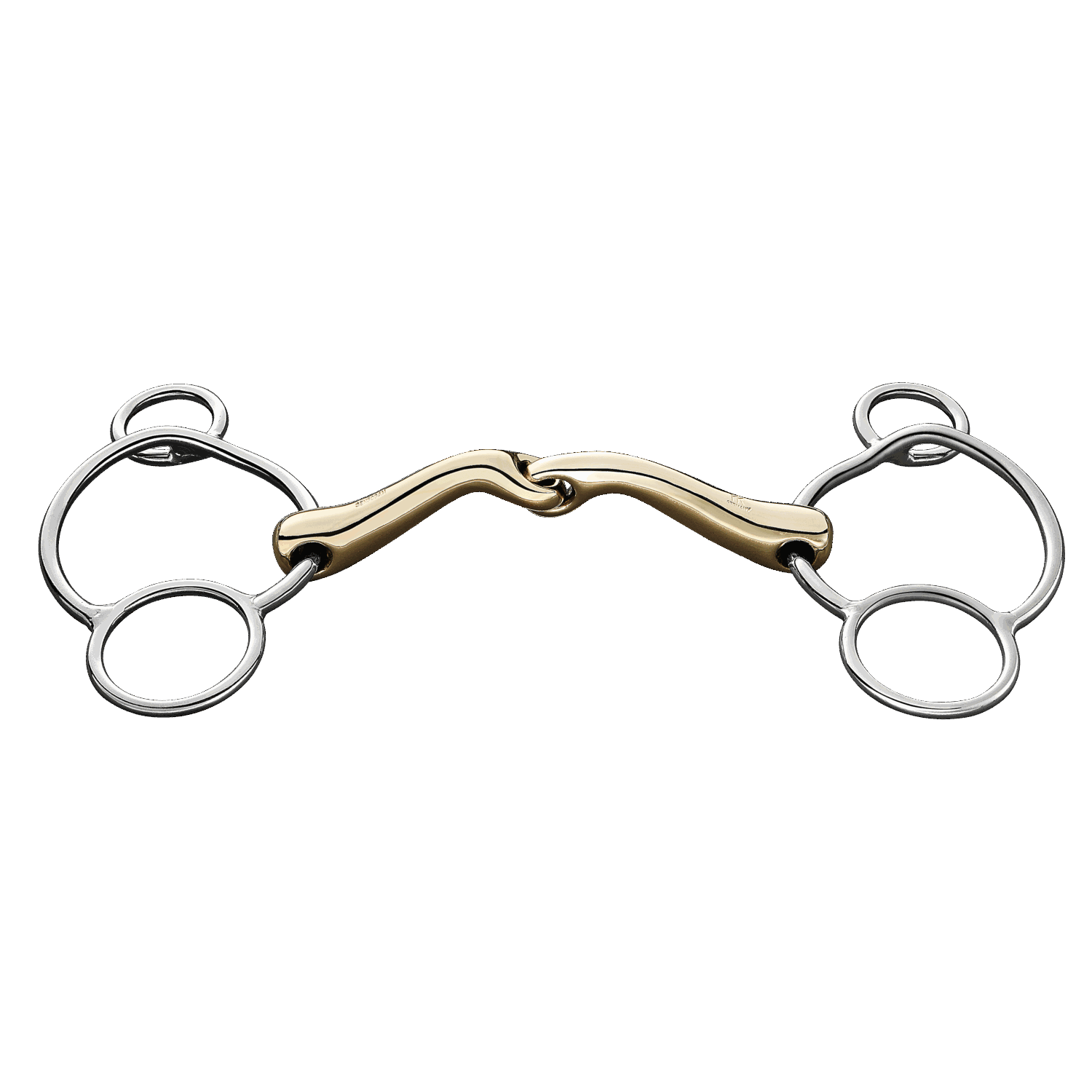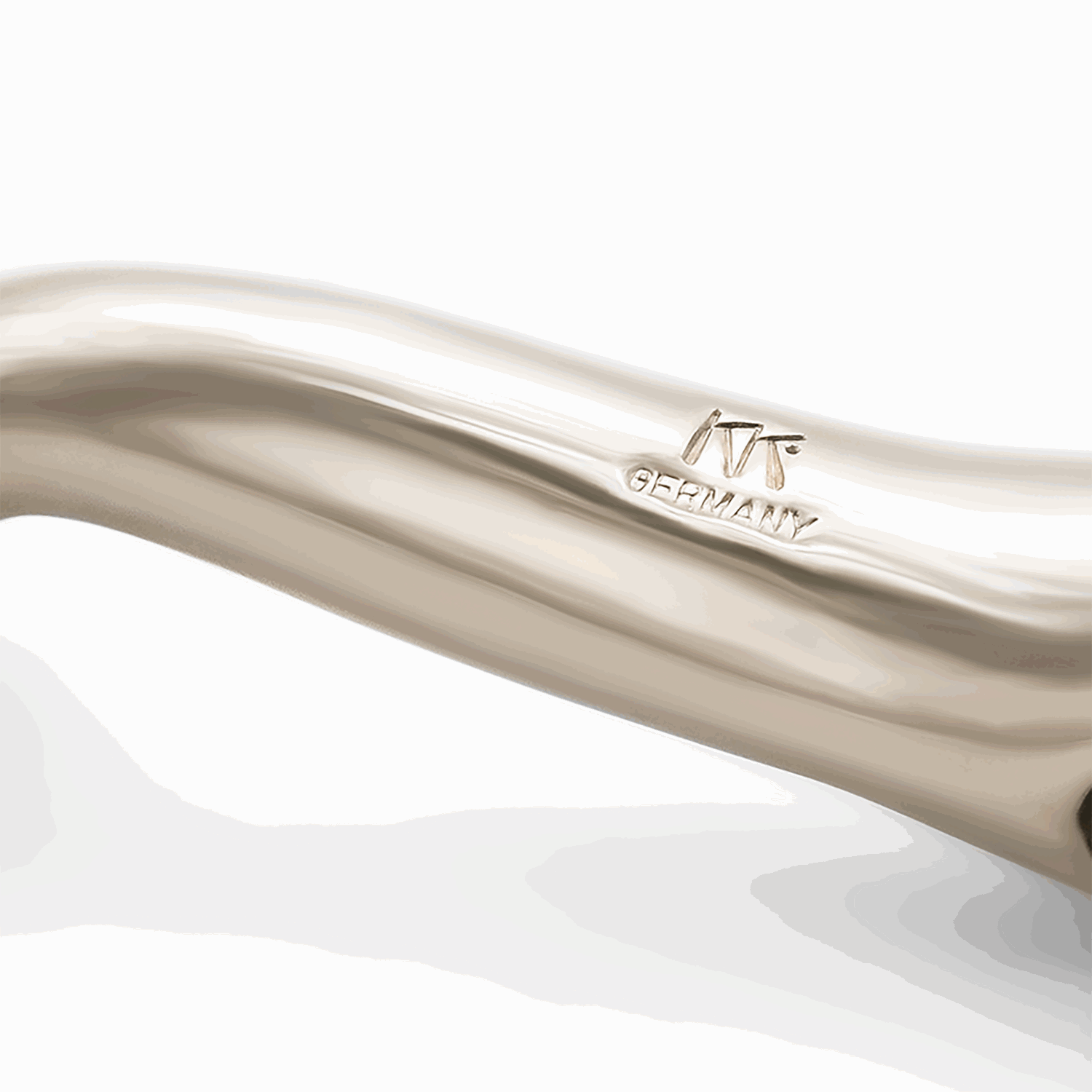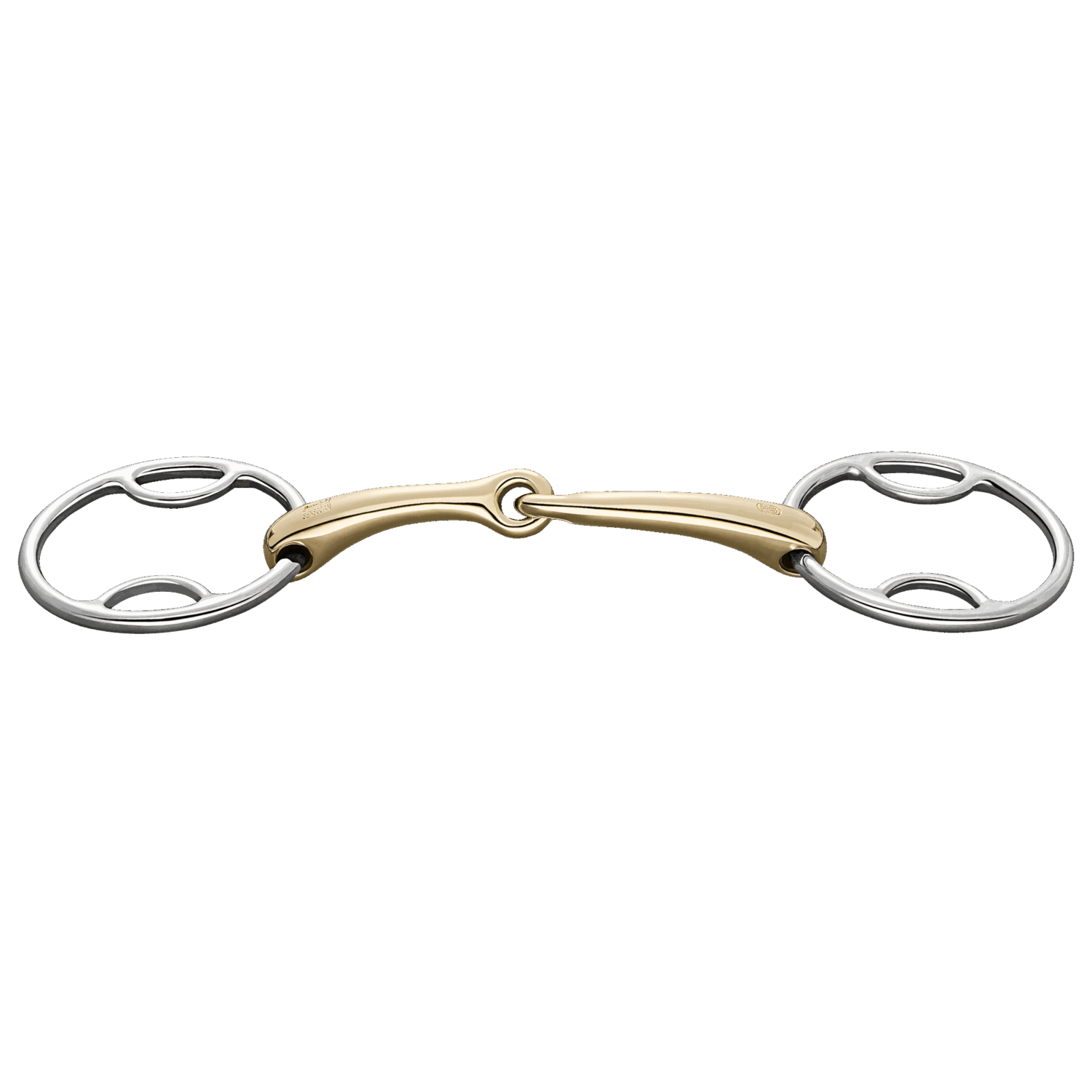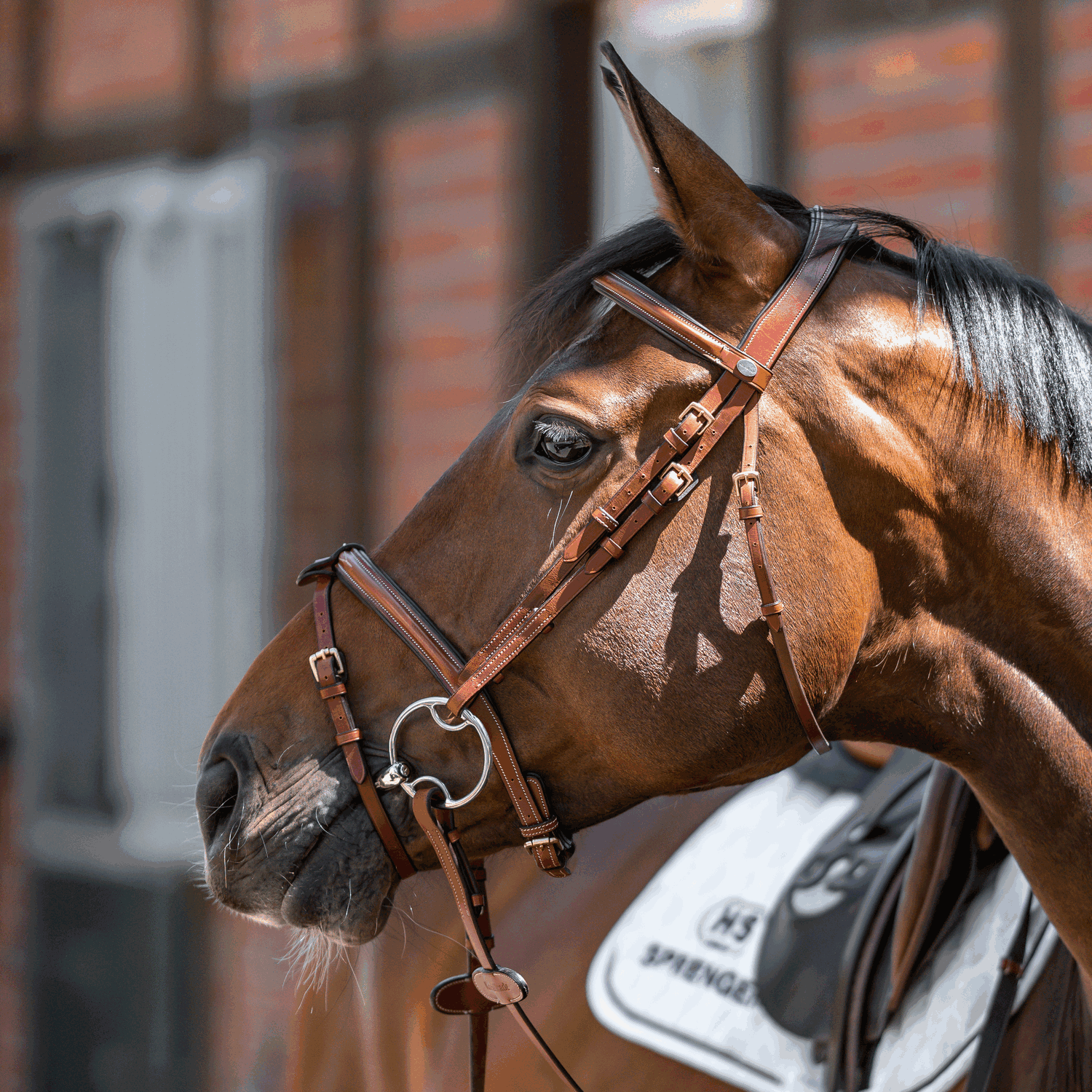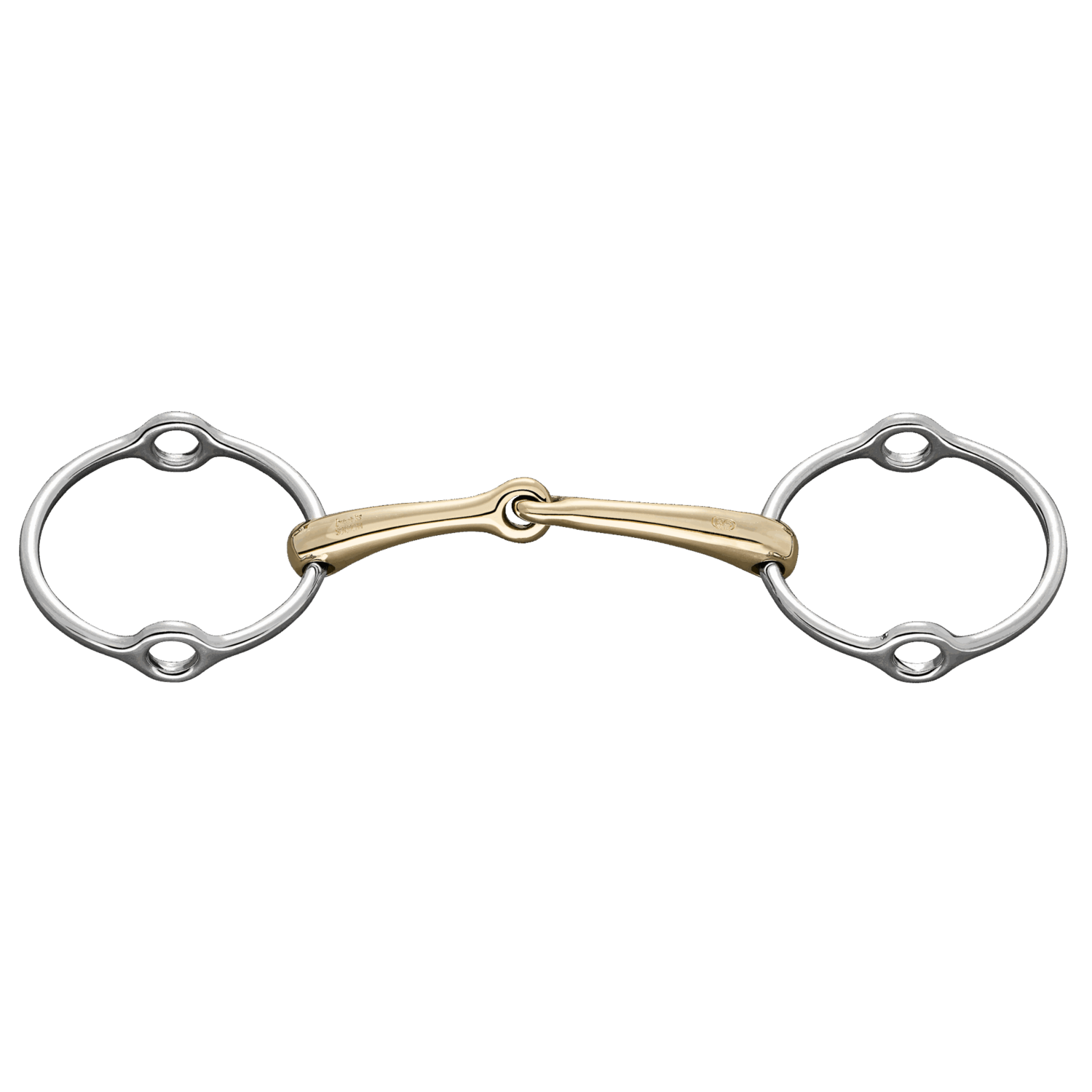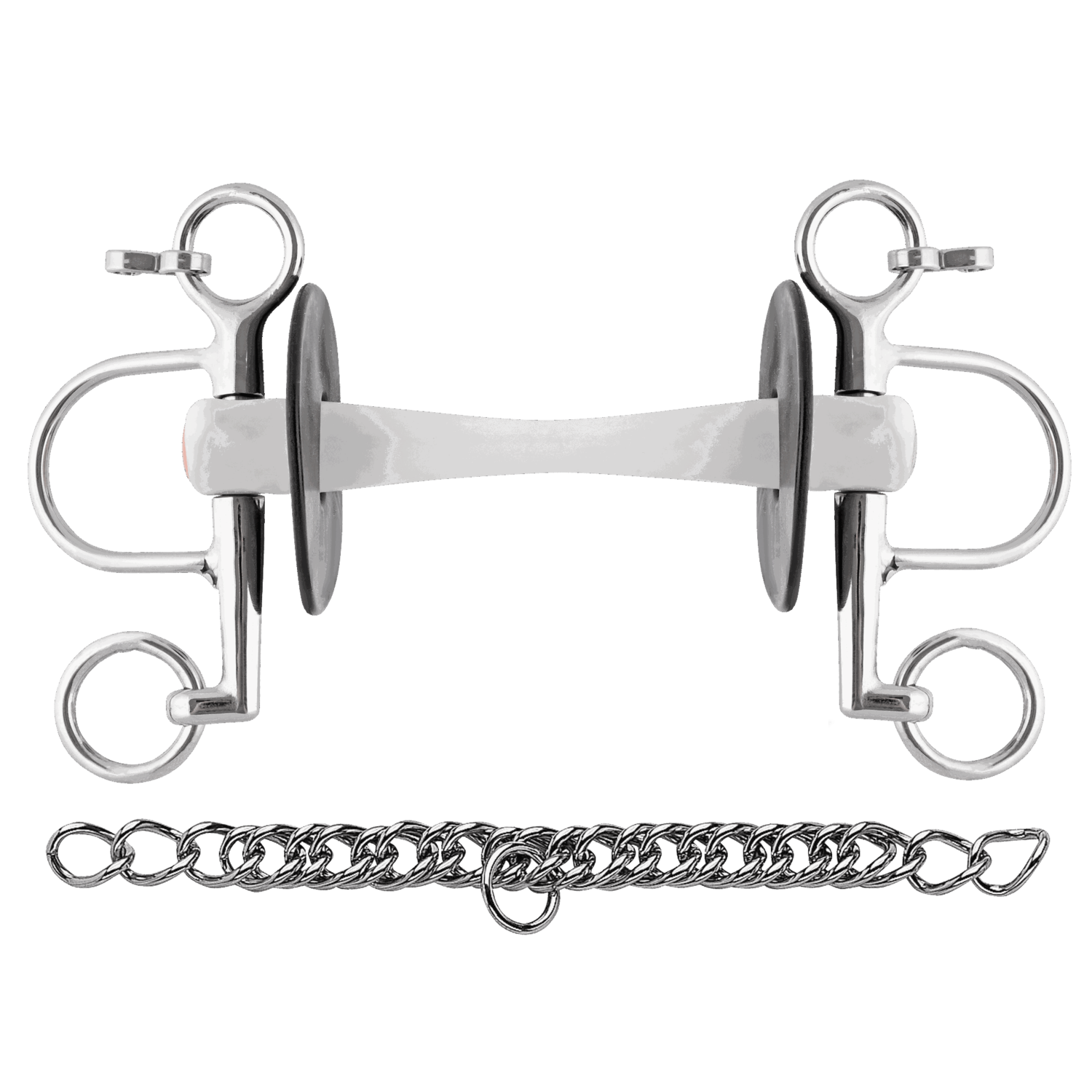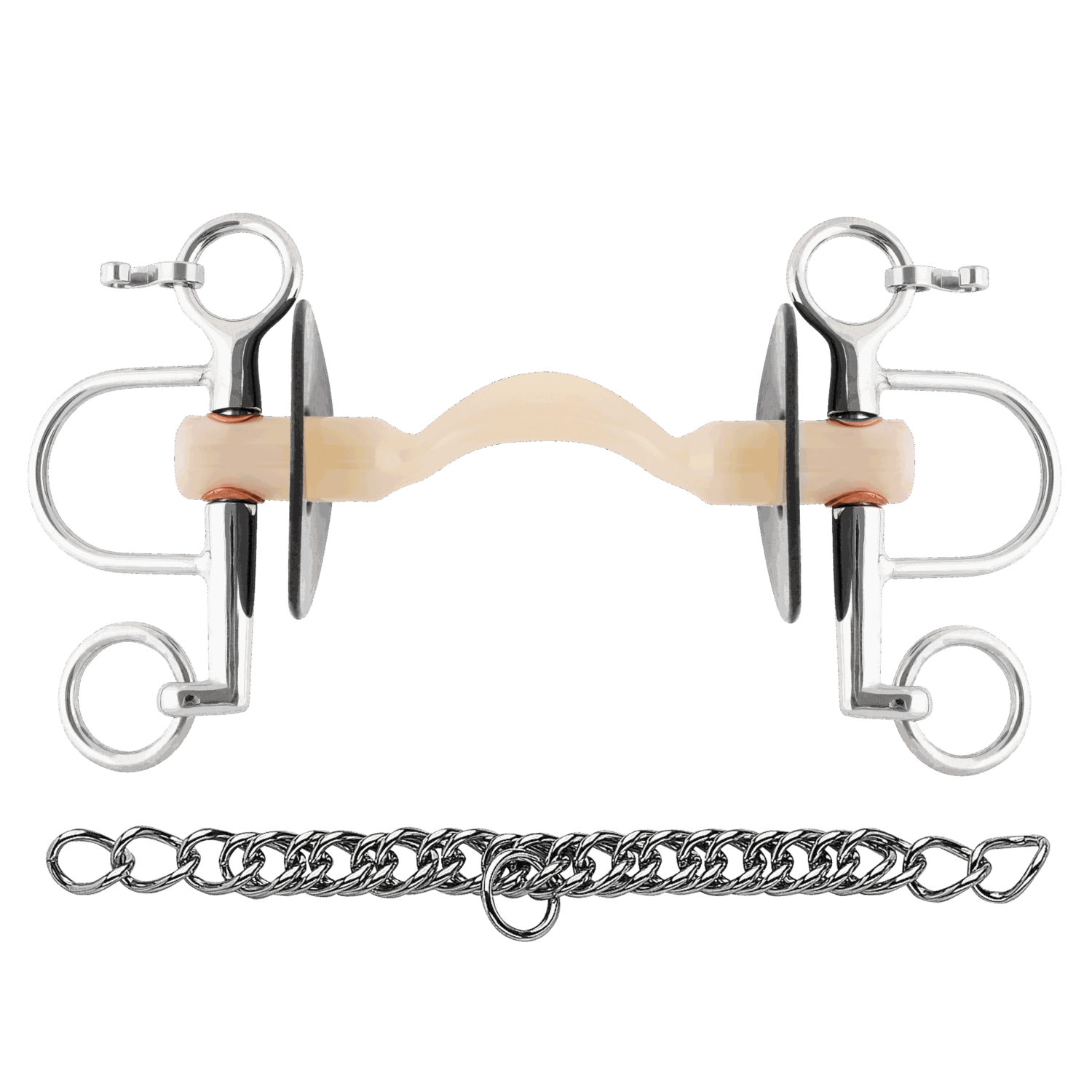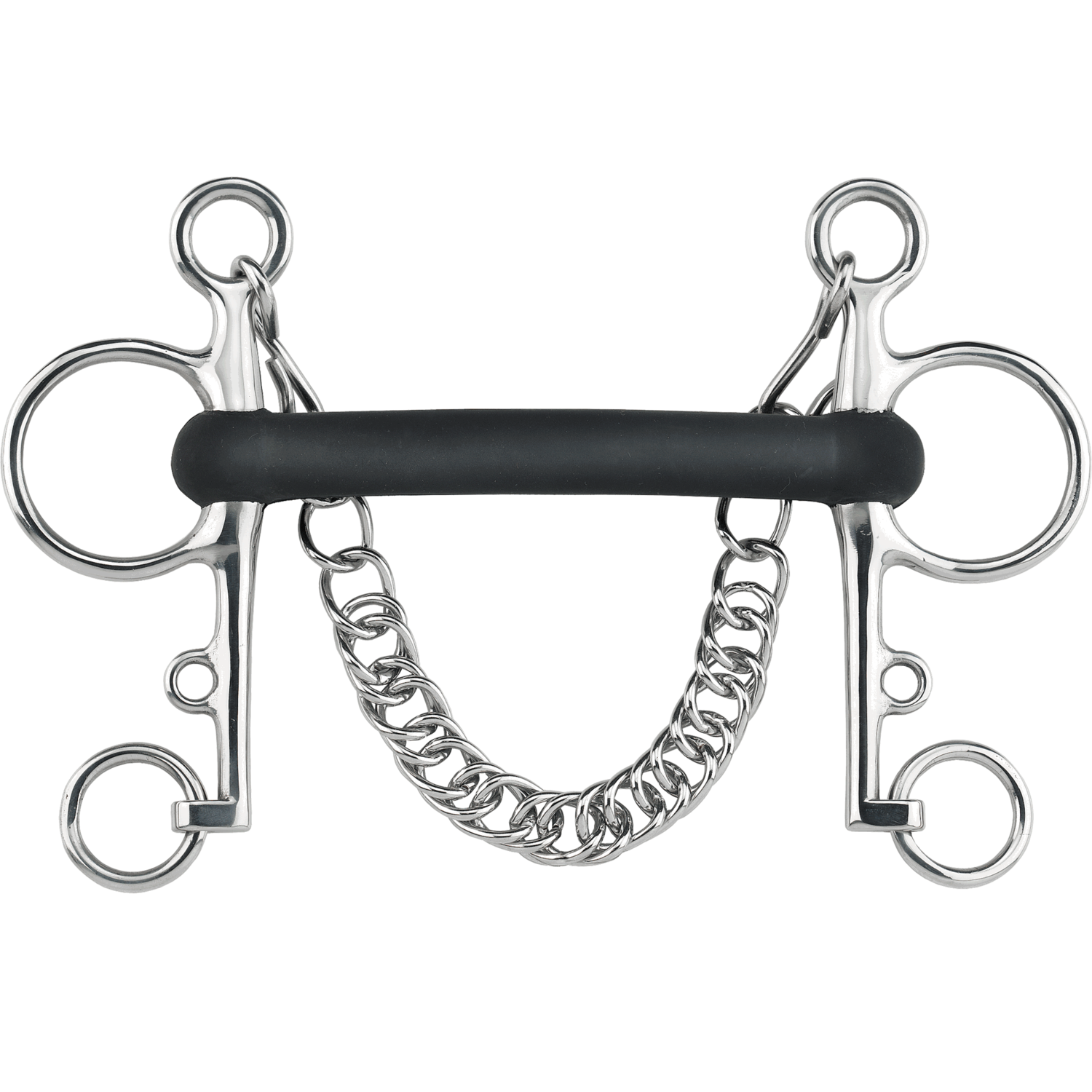3-Ring Bits, Pelhams, and Gag Bits: Versatile Bits with Leverage for Precise Communication
In equestrian sports, selecting the right bit is crucial for refined and effective communication between rider and horse. 3-ring bits, Pelhams, and gag bits offer a range of options with leverage effects to meet the individual needs of both horse and rider.
3-Ring Bit, Universal Bit, or Pessoa Bit?
3-ring bits, also known as universal bits, are characterized by their flexible rein attachment options, allowing the pressure on the tongue and poll to be adjusted as needed. Depending on the rein placement, the intensity of the leverage effect can be customized, making Pessoa bits particularly suitable for horses that are sensitive to tongue pressure or require more control in certain situations.
A Favorite Among Show Jumpers: The Pelham
The Pelham combines the characteristics of a curb bit and a snaffle, enabling nuanced influence on the tongue, poll, and jaw. By using Pelham straps, it can be used with either one or two sets of reins, allowing for individualized aid adjustments. The length of the shanks determines the leverage effect: shorter shanks enable quicker response, while longer shanks offer more intense influence.
Gag Bits
Also known as gag bits, these bits exert poll pressure through rein tension, making them particularly suitable for horses that tend to lean on the bit or press downward strongly. With gag snaffles or gag bits with eggbutt cheeks, the cheekpiece runs through the bit rings and is directly attached to the reins, providing precise control.
Correct Rein Attachment for Leverage Bits
Proper rein attachment is essential for the optimal effectiveness of these bits. For 3-ring bits, the reins can be attached to different rings depending on the desired intensity, allowing for variable pressure on the tongue and poll. For Pelham bits, the curb chain should be adjusted so that a 30- to 45-degree angle is created between the mouthpiece and lower jaw, ensuring effective and horse-friendly use.
When selecting the right bit, it’s important to consider the individual needs of the horse and ensure that the equipment fits well. A bit cannot replace basic riding training or solve riding or health issues. Therefore, riders should always aim for a soft and independent hand to maintain harmonious communication with the horse.


